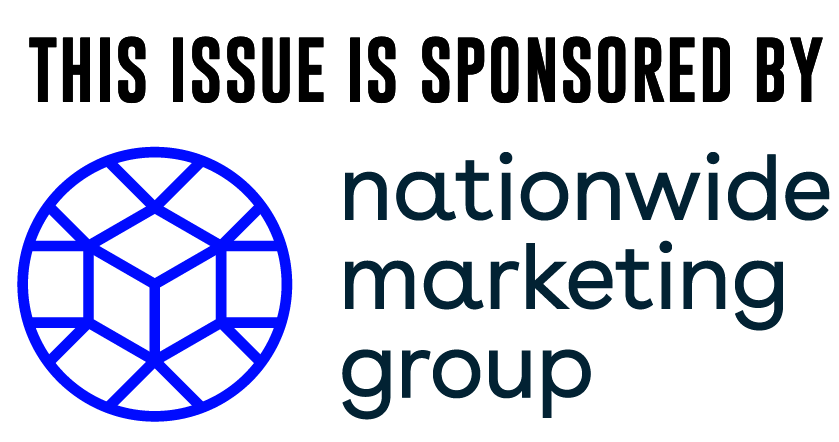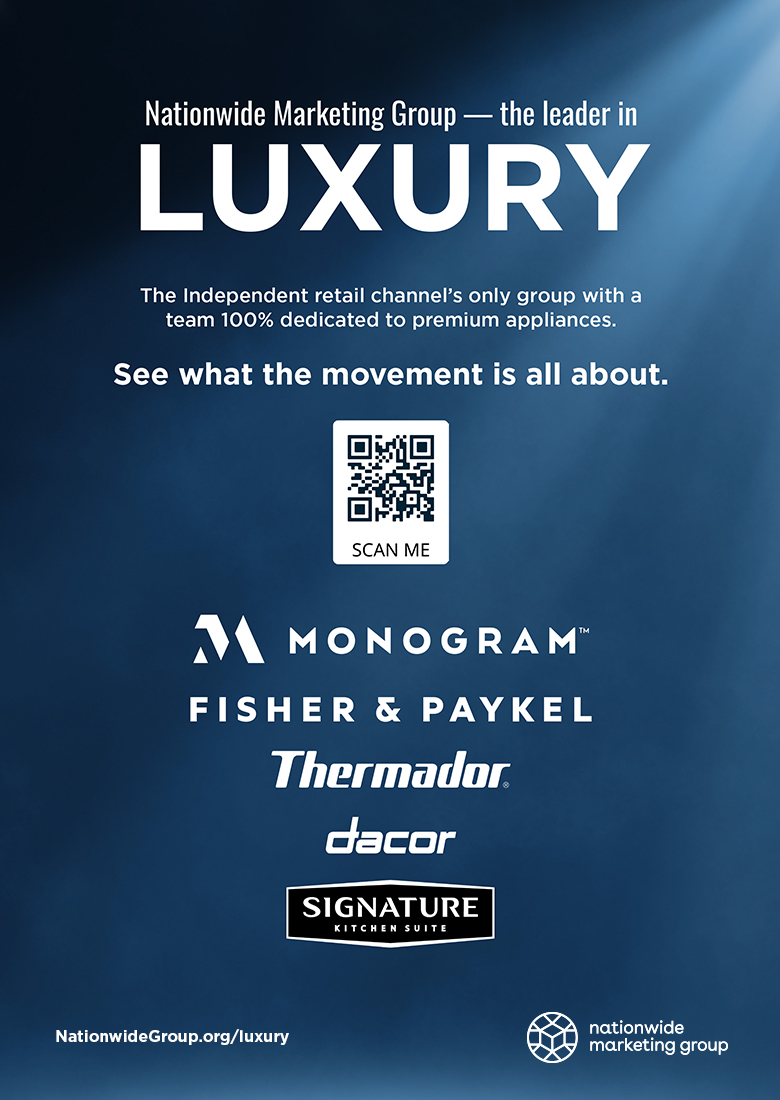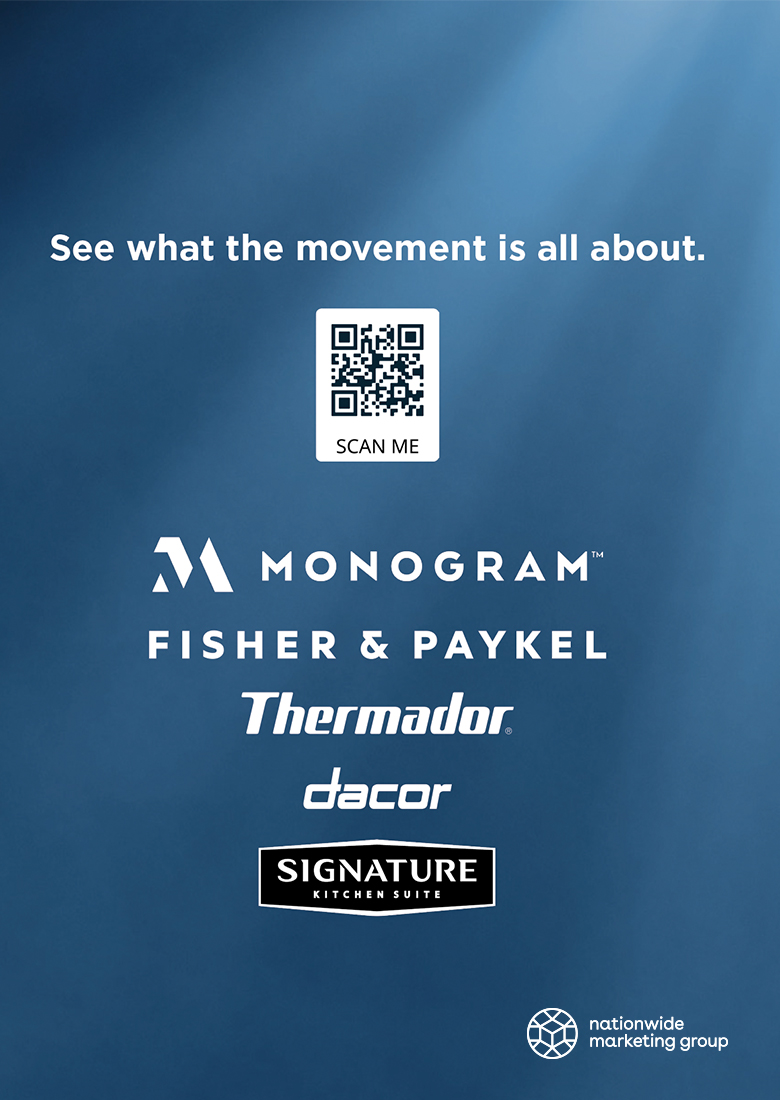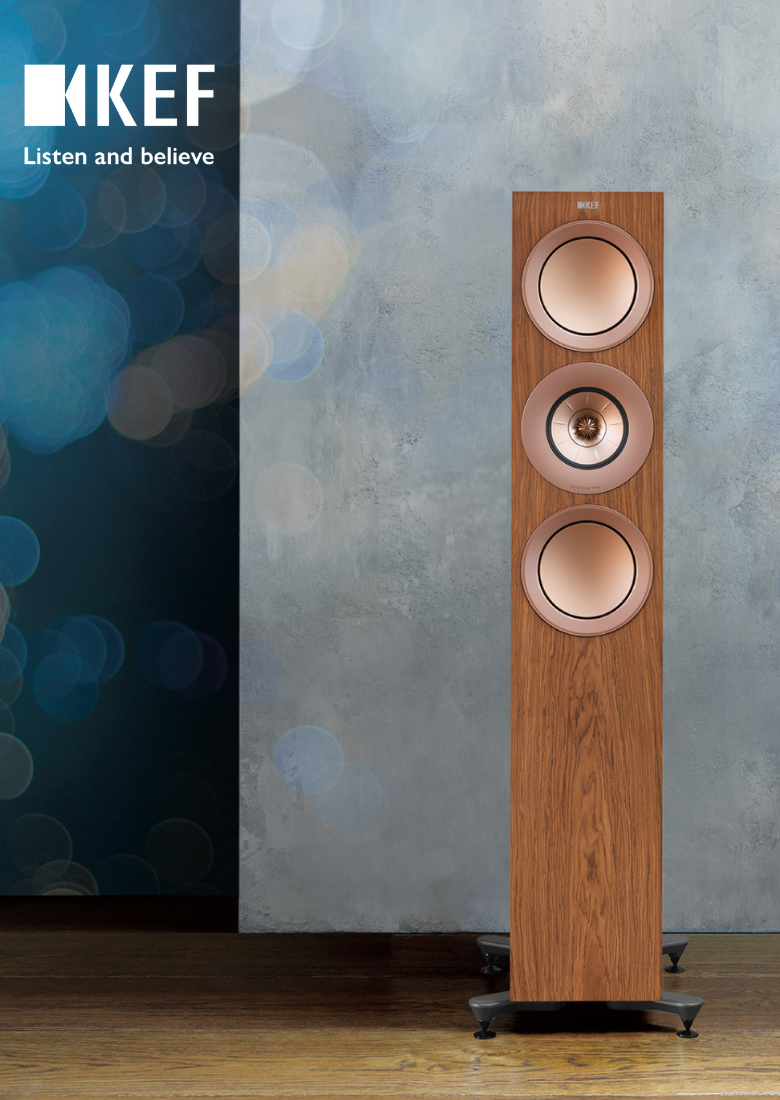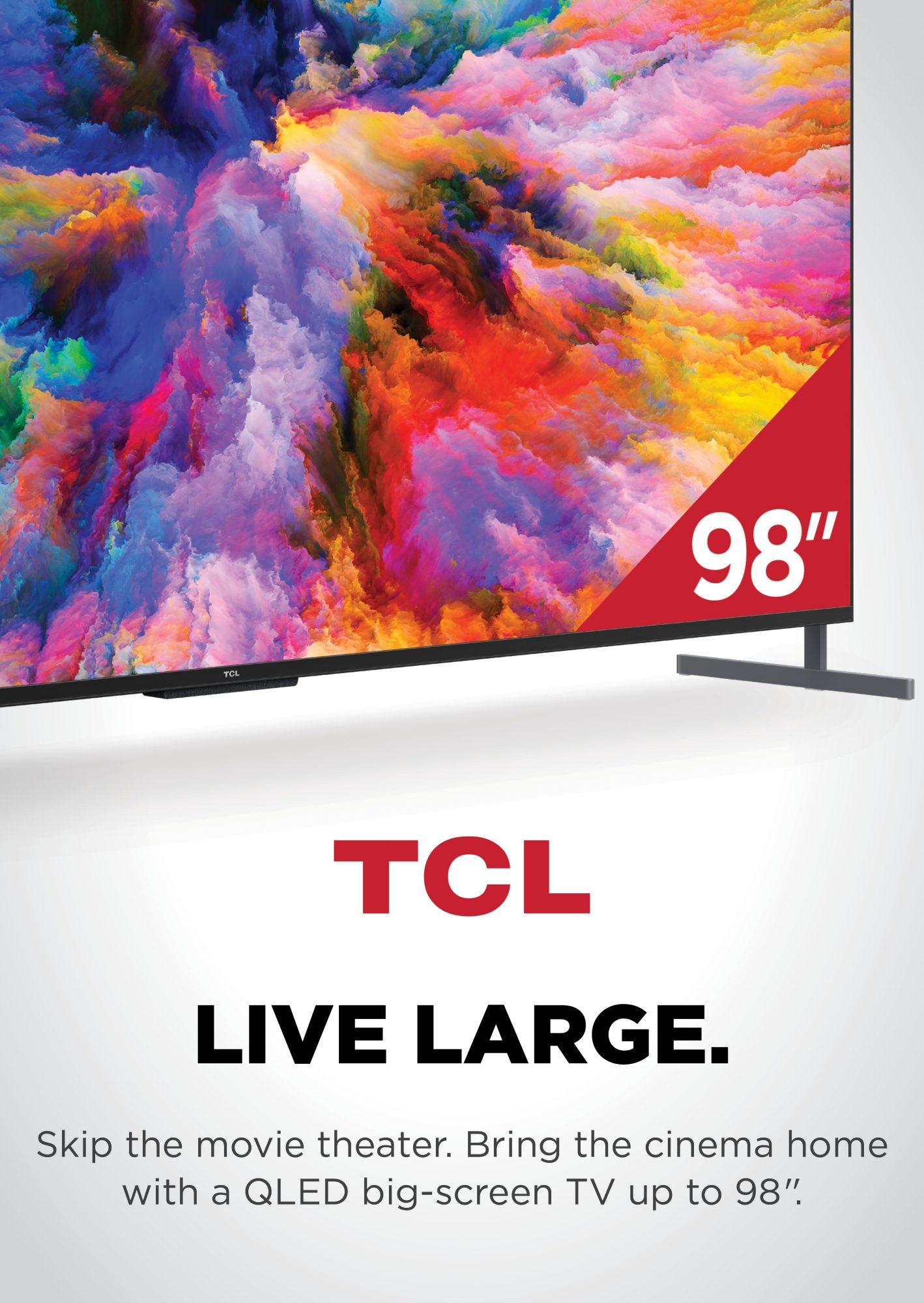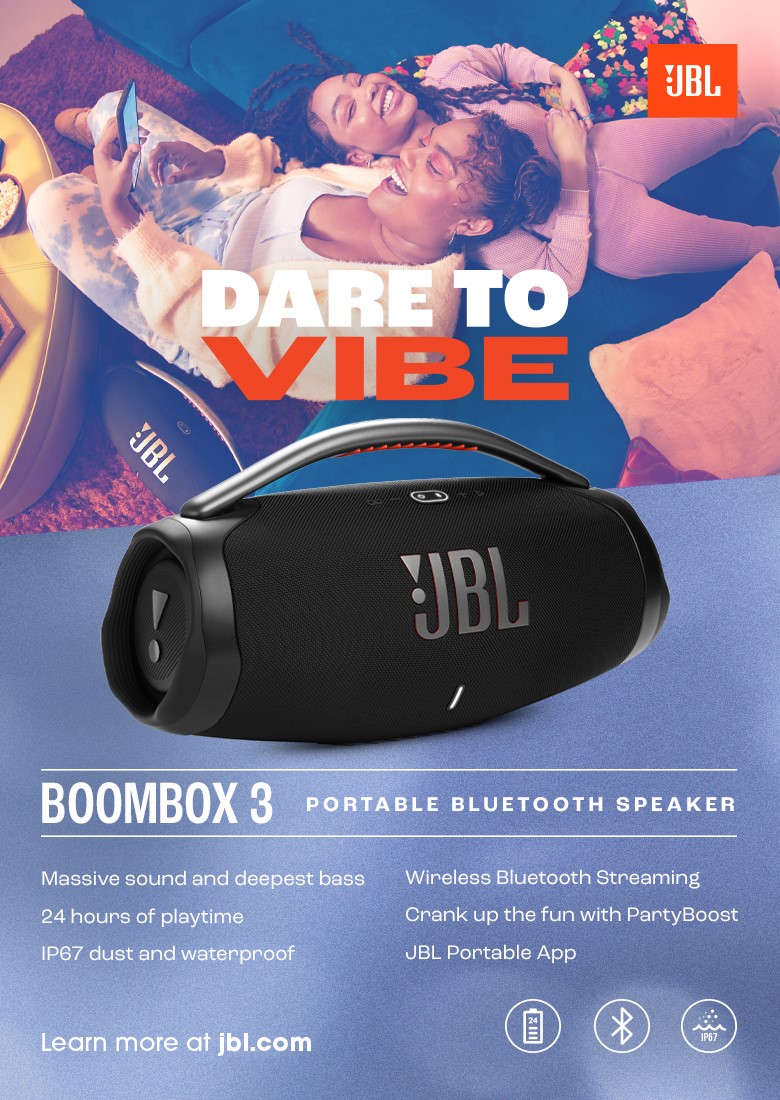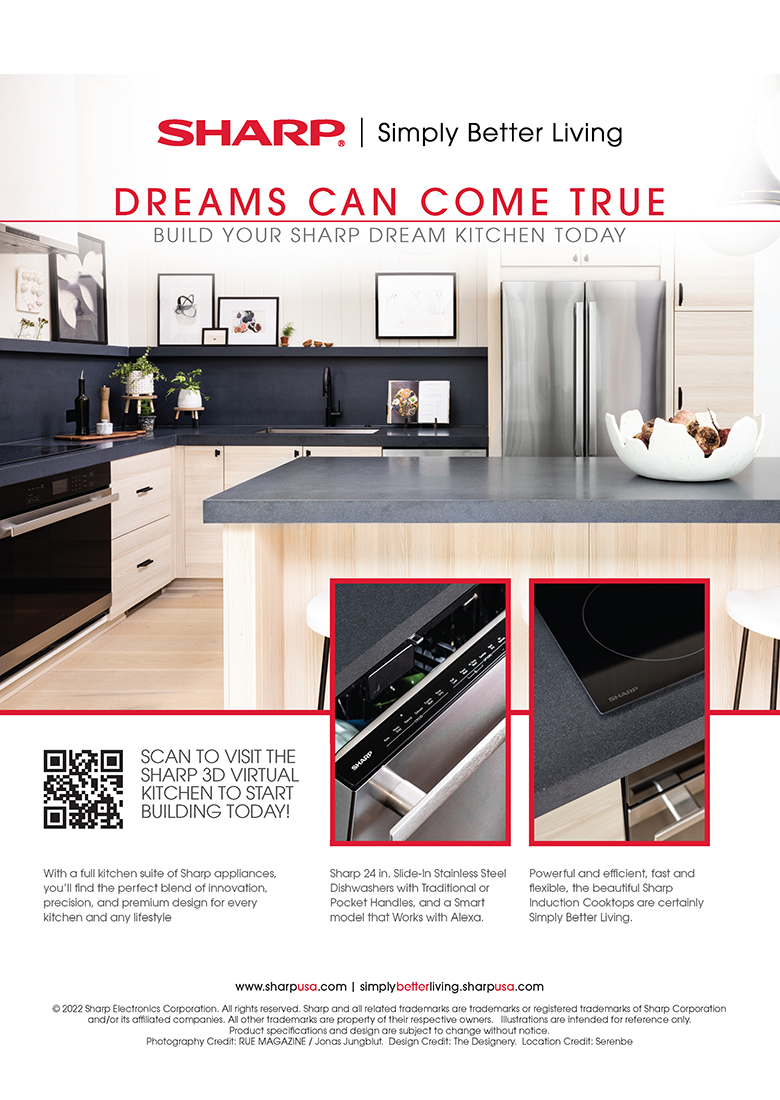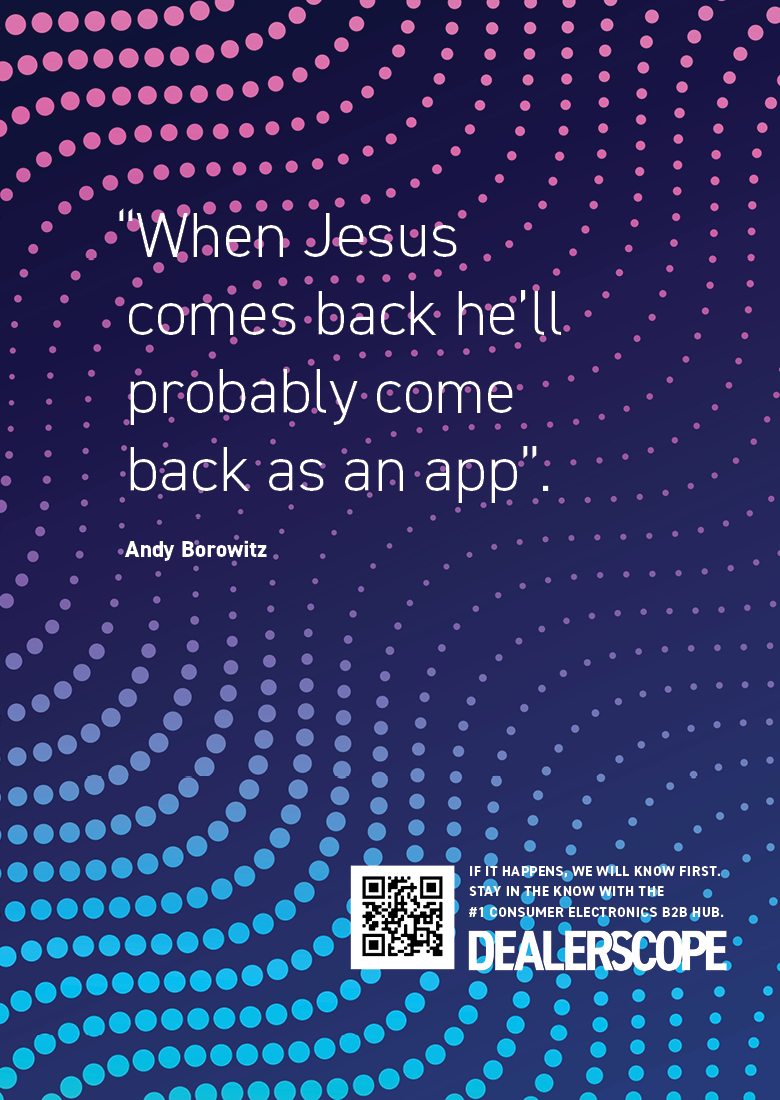It’s never too early to start gearing up for the 2023 Super Bowl. Along with preparing for customers looking to host the game on a new TV, learn about the best new health and audio wellness tech out there and find out the hottest products this fall.
Trade Shows and Trends
It makes me chuckle when I see how fast the years go by, and how much faster they move as I get older. With that, I also note how fast technology moves with time. The technology industry is an amazing industry to be in.
As I just finished my reports and emails to my IFA clients, I reflect on all the innovation I was fortunate to see in Berlin. Now, we turn our focus to Las Vegas and CES. I am looking forward to seeing a lot of our partners at this show. CEDIA was a great show, and many attendees had not seen each other since the beginning of COVID. It was quite the reunion. I am sure that will also be the case at CES 2023.
Our November issue will cover products and trends of the next several months to come. We all think of the holidays, but a portion of sales is also pegged to the upcoming Super Bowl. This is the perfect time to replace or gift that big-screen TV for the party. In addition, we want our TVs to sound as good as the picture looks, so we are featuring a roundup of soundbars and audio speakers for the home.
With the front of the party taken care of, we want to also help retailers to make sure that their customers’ snacks are ready, with a look at countertop appliances, including our unboxing of the Zojirushi AI Rice Cooker, and a great article on upgrading our smart products so they are all in concert for the holidays and the big game.
In addition, we have a Buying Group roundup covering the latest on issues their members are facing, and what they are offering members; and make sure to check out what the latest news is on the supply chain “State of Delivery,” and how it affects our business going into the new year.
Our great editors also provide you the latest news on AR/VR, Digital Health and Wellness, and Useful Tech Gadgets for your social media. It is time for your closeup!
Please make sure also to read about the best trends in Fall Accessories by one of our favorite contributors, Fred Towns from New Age Electronics. His insights are wonderful and informative.
Also, in November we welcome our first ever “Headphones Shootout” in NYC. With our great partner Robert Zohn of Value Electronics, we put together a talented team of judges to show the best of in-ear and over the ear headphones at different price points. Make sure to tune-in on November 12th on dealerscope.com when we stream live.
Of course, if you ever need anything, I want to hear from you – please contact me at tmonteleone@ctlab.media.
Best always, and have a wonderful Thanksgiving!
Tony Monteleone,
Group Publisher of CT Lab Global Media
A WORD FROM OUR EDITOR IN CHIEF
A Return to a True Football Season

As a graduate of an SEC school (go Dawgs!) I can attest to the fanatic energy around football season. When I was in college and for years afterwards, my entire weekend schedule was planned around the big game. We would tailgate hours before it actually started — and in our dresses and button-down shirts, because it’s the South — and watch in rapt attention the entire game. After all, this is football — not baseball!
Now as adults with kids and a busy schedule, we rely on our TVs to transport us to back to those bleachers. While I’m more of an SEC fan, the Superbowl is something that cannot be missed. And the 2023 game will be the first in years that many will be hosting watch parties with friends and family and more than likely already planning ahead.
That’s why our cover story is on Superbowl sales. November is the time of year many look for a new TV to buy in preparation for the big game, and low interest rates are allowing retailers to offer excellent financing deals to consumers looking to buy now. The outlook on who is staying home and watching versus going out is yet to be seen, but either way, retailers can look forward to a positive season.
Also in this issue we’re keeping you in the know with our speaker, soundbar and audio roundup of 2022, as well an article covering the gadgets you need to know of – and maybe stock — on your shelves this season. Consumers are already thinking about the holiday season, where health and wellness is topping their gift lifts, so check out our update on tech for better hearing and wellbeing. Also check out how virtual and mixed reality is making strides; the immersive experiences that people can find today are lightyears ahead of where they used to be, and just in time for the holidays as well.
Thank you for reading Dealerscope magazine.

Erinn Loucks
Editor in Chief

CE RETAIL TECHNOLOGY
November 2022 CE News

IKEA Latest Company to Target All Electric Delivery Fleet | In October, IKEA CEO Jesper Brodin announced that the company will have all home deliveries made by electric vehicles by 2025. The announcement comes as part of the company’s larger initiative to be climate positive by 2030 – a goal that it is on track to hit. Since 2009, the company has spent nearly $2.9 billion on wind and solar projects and owns 575 wind turbines, 20 solar parks, and 935,000 solar panels.
Federal Government Mediates Labor Agreement for Railroad Workers | Railroad unions and freight companies have come to an agreement with the help of the federal government to avoid a potential strike from railroad workers. According to the National Carriers’ Conference Committee, the terms of the deal “include a 24% wage increase during the five-year period from 2020 through 2024 — with a 14.1% wage increase effective immediately — and five annual $1,000 lump sum payments.”


High Inventories Plague Retailers Heading into Holiday Season | According to data from the Census Bureau, retailers are sitting on a record $732 billion of inventory, which accounts for a 21 percent increase from 2021. In order to move these stockpiles of goods, many retailers are offering uncharacteristic discounts in the lead-up to the 2022 holiday season.
Labor Shortage Helps Open Doors for the Formerly Incarcerated | At the moment, the national unemployment rate is 3.6 percent and labor force participation rates still lag behind pre-pandemic levels. This national labor shortage has led to companies turning to overlooked demographics such as those with criminal backgrounds to fill vacancies. According to a January survey from Society for Human Resource Management Foundation, 46 percent of hiring managers reported recruiting people with criminal records more frequently than they did in the year prior.


Consumers Get an Unusually Early Jump on Holiday Shopping in 2022 | According to a survey conducted by the analytics firm Bankrate, 59 percent of consumers are feeling anxious about being able to afford gifts this holiday season due to higher prices. To cope with this discomfort, consumers are beginning their holiday shopping far in advance to help spread out costs and reduce stress later in the season. The same Bankrate survey shows that 20 percent of consumers decided to start their shopping before the end of September while just a meager 9 percent of people plan to start shopping in December.
Samsung and Google Ecosystems to Welcome Matter-Compatible Devices | Samsung has announced that users can harness Galaxy devices to add any other Matter-compatible product to both the SmartThings and the Google Home ecosystems. This is a major step for the Matter interoperability movement, which just launched its Version 1.0 SDK in early October.

CE RETAIL
State of Delivery: How the Chip Shortage Fares in 2022
While there is cause for optimism,
retailers and manufacturers should remain
cautious heading into 2023
By Sam Hitt
The global chip shortage has featured prominently in the minds of original equipment manufacturers (OEMs) and retailers across the country since early 2020. In the past two years, the lack of chips has affected nearly every segment of the technology sector, hitting everything from e-bikes to appliances, laptops and cars.
As we head into the last few months of 2022, lead times for chips are still at an exorbitantly high 26.3 weeks, according to research from Susquehanna Financial Group. However, that number is down four days from the month prior, leading many to optimistically speculate that it could be a good sign for things to come. Given all these speculations, the question remains: where are we now?
The answer is complex and depends greatly on the target segment. Many of those who have their finger on the pulse of the industry are reluctant to speculate too far in the future due to its volatile nature.
Mike Thomas, vice president and general manager at Classic Components — an independent stocking distributor whose business is predicated on finding and sourcing components through channels not typically accessed by manufacturers — told Dealerscope: “Demand for consumer electronics and PCs are falling off, while automotive, medical and industrial are in demand and as tight as ever. That keeps us in a constant reactionary state. We can’t stock an item at 10 times its regular price. Sure, it might go up two times again, but it also might drop in half or more in the same week.”
The independent distribution channel provides a great perspective since it has flourished in providing emergency sourcing to businesses that can’t afford to wait more than six months to obtain components. Thomas estimates that in the past two years Classic Components has on-boarded nearly 1,500 new customers — a major increase from pre-pandemic levels.
The reasoning behind this boom is simple, according to Thomas. Classic Components, which finds points of arbitrage in the market, can get parts to consumers in just 2-3 weeks whereas standard channels that may still be quoting 52 week lead times.
Davide Vigano, the co-founder and CEO of Sensoria Health Inc, echoed Thomas’ analysis, telling Dealerscope, “We’ve been impacted by the chip shortage pretty substantially. Cost has gone up tenfold, literally tenfold, and even availability has become a challenge now,” he said. “The supply chain is getting better compared to three to six months ago but pricing is still up.”
Sensoria Health, which manufactures a medical-grade health and wellness wearable with sensors embedded in the fabric of clothing, is designed to help doctors monitor patients with serious conditions such as Parkinson’s and diabetes. As a result, the company relies on the same cutting-edge and highly complex chips used in electric vehicles and medical equipment. “The IMU we have selected is the highest quality IMU we could find on the market. We are unwilling to compromise on the quality of our components,” said Davide. “We compete with top-tier brands in the automotive world on components, and we are a small company, so that is a challenge for us.”
Challenges for sourcing chips are lingering outside of the automotive and medical fields. According to Fred Towns, senior vice president of sales and marketing at New Age Electronics, the gaming industry is dealing with limited chip availability for important components such as motherboards and memory units.
However, on an optimistic note, Towns told Dealerscope that getting access to components is “radically improved from what it’s been in the past.” He went on to say, “I think in the [segments] that are more plentiful, it’s now like the traditional chip side of the market: it favors the buyers.”
Even though lead times for chips are trending upward, the industry certainly isn’t out of the woods yet. If the chip shortage of the past two years has taught us nothing else, it is that the global supply chain is fragile and America’s manufacturing sector is too reliant on semiconductor imports. The country is unlikely to find a long-term solution for high-tech chip manufacturing until 2024 or 2025 when manufacturers such as Micron, Intel, Samsung and TSMC are forecasted to begin production at their new multi-billion dollar U.S. manufacturing plants.
KEY TAKEAWAYS:
- Lead times for semiconductors decreased to 26.3 weeks in September. While that is still an exorbitant amount of time, it shows that the industry is moving in the right direction.
- All chips are not created equal. Chip supply is satisfactory for most consumer electronics sectors but lags behind in the automotive and medical fields.
- Experts predict chip insecurity to last through 2024 or 2025 when major manufacturers are likely to begin producing in the U.S.
COVER STORY
The Season Opens for
Super Bowl TV Sales
Challenges and opportunities
await retailers this holiday season
By Egon Sanders
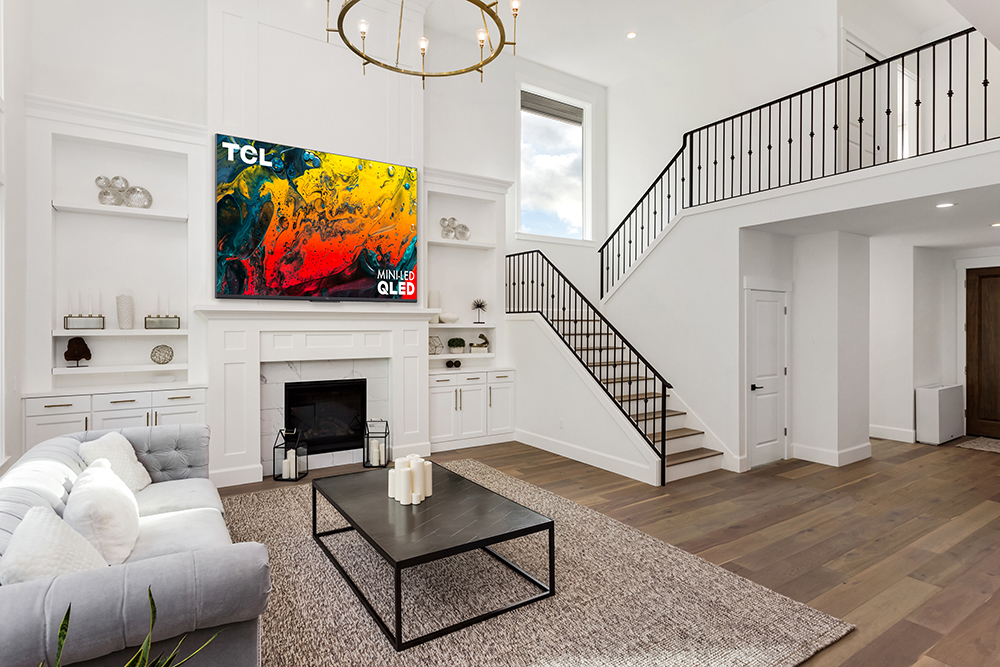
The TCL 6-Series Google TV
With its stellar combination of great performance and Google-powered smart TV features, TCL’s 6-Series Google TV is an excellent value, even at its regular price. Everything from color quality to response time has been improved from the popular previous generation, and the 4K QLED display is crisp and beautiful. Google Assistant integration even makes it a perfect fit as a hub for a home full of connected gadgets. Especially at a discounted price, this one is tough to beat.
The turn of the calendar year signals many things; for the consumer electronics industry, it’s the end of one important buying period and the start of the next. As we transition from the holiday season into Super Bowl season, retailers see what is sometimes called “a second Black Friday,” explained Michael Felice, associate partner at global strategy and management consultancy Kearney. For TV retailers, historically it’s a great time: As is the case with the auto industry, there are new models of television sets coming out all the time, and the lead up to the Super Bowl sales is an opportunity for those manufacturers to clear out their old supply to make room for new models. This at a time when there’s high demand from consumers who want to host the game: Felice pointed out that January typically sees a 30 percent increase in TV sales over the rest of the year—making up 15 to 20 percent of total television sales for the year, much more than any other single month in the market.

BRAVIA XR A95K 4K HDR OLED TV
Jam packed with cool, future-forward tech, this 4K OLED beast has a 120Hz refresh rate, Google TV streaming, Sony’s Cognitive Processor XR, and of course HDR and Dolby Vision — to name just a few of its features. The display produces great colors and contrast ratios, and viewing angles are excellent — nice when you have lots of people watching the big game together. Its built-in upscaler is also excellent, bringing a standard 1080p Super Bowl broadcast up to crisp 4K.
For guidance on what to expect in 2023, Felice pointed to the benefits and challenges retailers have seen over the past few years of pandemic uncertainty. On the positive side, he points out that low interest rates set the stage for retailers to offer great financing deals—some with 0 percent APR—driving shoppers into new categories such as OLEDs, smart televisions and others. During the same period, however, retailers have faced constraints on chip shortages, leading to inventories that weren’t as high as they had been pre-pandemic. Other tradeoffs included higher sales to homebound people during the pandemic—who planned to watch the Super Bowl in their own living room—versus going out to group watching events.
“It will be interesting to see how TV retailers market Super Bowl viewing this year, coming up against people wanting to get out and experience it,” Felice said. “We’re seeing a steep rise in spend on experiential activities for people seeking interaction coming out of the pandemic.” So, while he expects there to be some discounts, particularly on promotional bundling, he doesn’t believe we’ll see the level of discounting this year that we’ve seen in the past.

LG G2 OLED
The LG G2 OLED is a massive improvement upon LG’s previous G1 model, with improved brightness (a tricky thing for OLED sets), color accuracy and lag times. Its design is also something to behold: the thin, elegant frame makes the bezel almost invisible, making it a perfect set to mount on the wall. Finally, its built-in speakers are some of the best around, essentially removing the need for a separate speaker setup for many users.
On that last point, Felice predicts we’ll see more of the new “bundle packaging” mechanism in TV sales promotions—due in part to the saturation we’ve started to see in the streaming wars, which have hit some of the production studios quite hard. “While Netflix, Amazon Prime are stable apart from television, HBO Max, Disney Plus and Paramount are all competing for that space—so we will likely see more bundle packaging,” he said. “New promotional mechanisms, such as ‘buy the television, get X amount of streaming use,’ are emerging.” Indeed, in trying to drive more consumer spending to convert on one big sale, we’re seeing the trend of wanting to get more interaction beyond the one-time purchase of the TV set.
Along these lines, Felice believes that integration with aggregators of content—Fire, Google TV, Roku, etc.—will remain on an upward trend, transitioning “the disaggregation of content into the rebundling of it.” He put it succinctly: “Interaction is the new transaction, and bundling is the new consumer experience.” That is to say, if you don’t partner with Sony and Roku and Netflix, you’re not touching the consumer at enough points to maintain their business. “For retailers going into Super Bowl season, this will mean forging these partnerships ahead of time, and being ready to transact come early 2023.”
As for supply chain issues? Felice expects that there will be some difficulties keeping OLEDs in stock because of the chip shortages: OLEDs are very sophisticated, and manufacturers often can’t substitute other parts in them. “So we may see some of the top-end televisions hovering, price-wise, and not being as promotional or discounted. It’s also going to be more challenging on the financing end, given inflation and the pressure on the consumer wallet, for retailers to come up with creative ways to push the product.”
As we head into the new year, here are some sets to look out for sales on come Super Bowl season — great for watching the big game, and much, much more.
AUDIO
A Variety of Ways to Listen
Speaker, soundbar and audio roundup for 2022
By Stephen Silver
Whether it’s coming from a wireless speaker, a home theater setup, or even a wearable device, good sound is more important than ever. And there are also more places than ever to get it, in different ways, to high-end to low-end to everything in between. Here are some of the year’s best and most notable audio products, from such names as Bose, Bang & Olufsen, Klipsch, KEF, Sennheiser and many more.
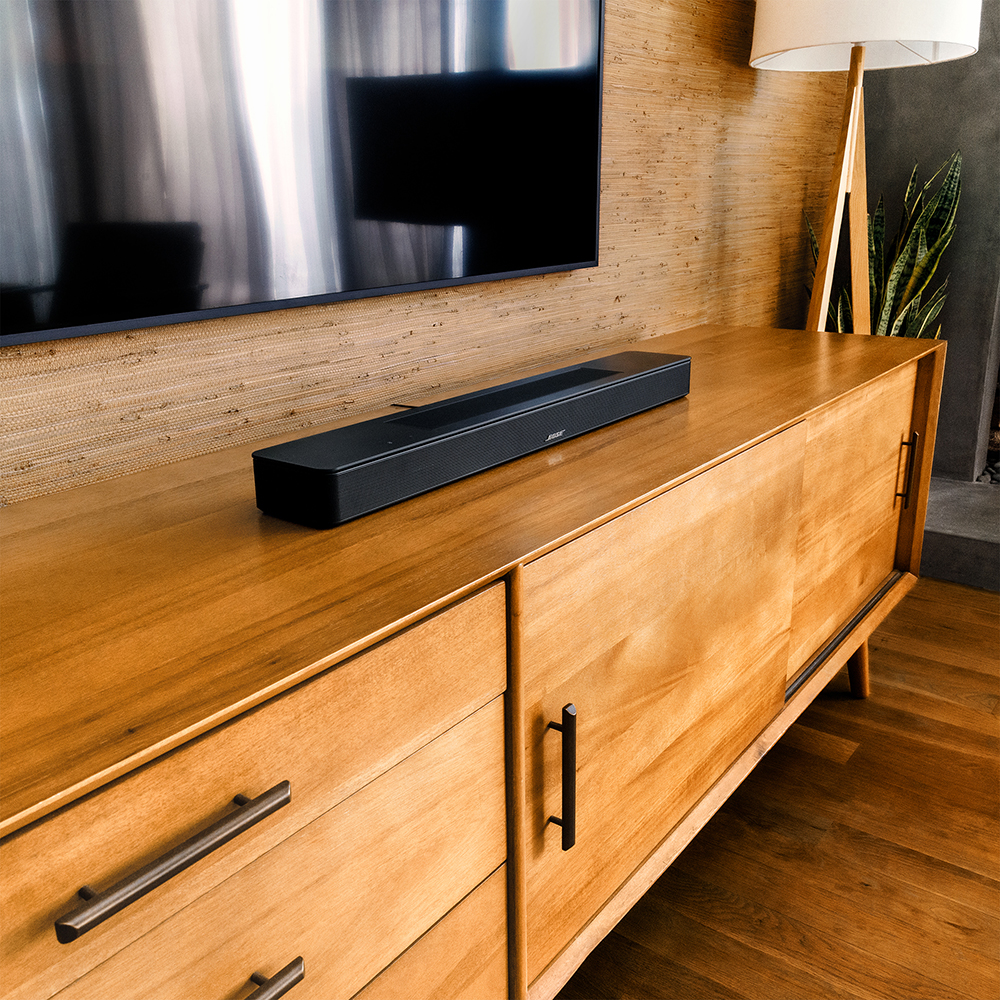
The Bose Smart Soundbar 600
Featuring Dolby Atmos and proprietary Bose TrueSpace technology, the Smart Soundbar 600 has Wi-Fi, Bluetooth and Chromecast functionality built in. It offers a compact size, and five transducers to produce sound, even in the absence of speakers. Introduced in early October, the Soundbar 600 works with both Spotify Connect and Apple AirPlay 2. The soundbar, Bose says, “elevates movies, TV and music by precisely placing dialogue and vocals, sound effects and instruments to the left, right and even up above — ensuring no matter what you’re watching or listening to, the sound is astonishing.”
MSRP: $499.00
Bang & Olufsen Beosound Theatre
The highest of high-end soundbars, Bang & Olufsen’s Beosound Theatre offers no fewer than 12 speaker drivers, along with 800 watts of amplification power. The product is meant to both “unleash the full potential of streaming services,” and deliver a theater-like experience. For this 7.1-channel soundbar, B&O touts “all the power, clarity and immersion of a multi-speaker setup.” It is also meant to work, specifically, with LG TVs.
MSRP: $7,990.00
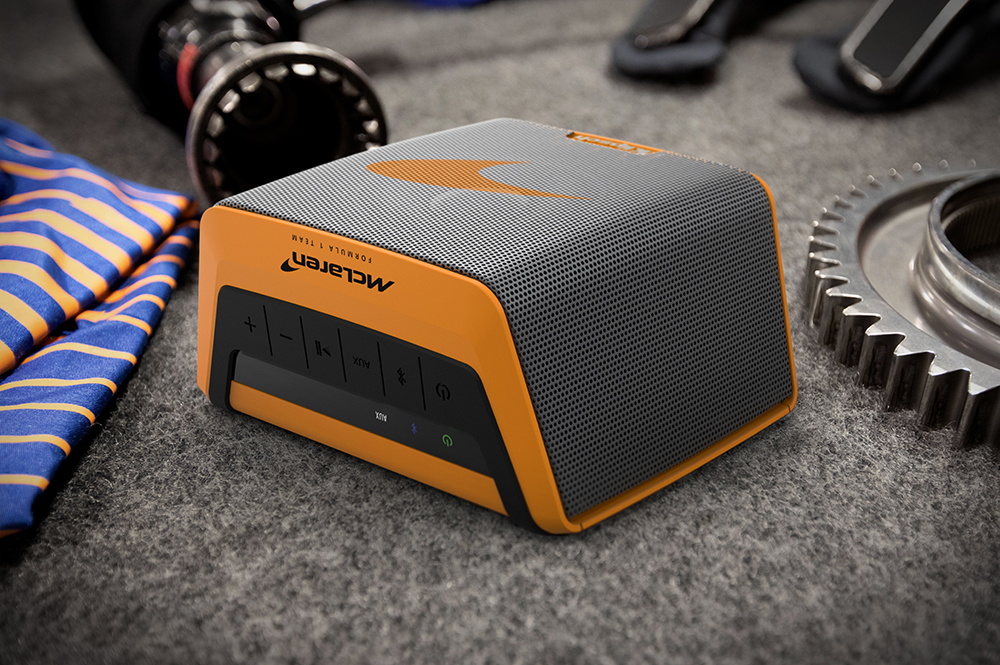
Klipsch Groove McLaren Edition Portable Bluetooth Speaker
The latest fruit of the partnership between Klipsch and McLaren Racing, the portable Bluetooth speaker features a 3.5mm input in addition to its Bluetooth capabilities. A special edition of the existing Klipsch Groove speaker, it also offers a fast-charging and rechargeable Lithium battery and can remember up to eight previous devices. The McLaren Edition features McLaren’s signature look, a Papaya Orange color. Klipsch is the official headphone and portable audio partner of McLaren’s Formula 1 team.
MSRP: $179.00
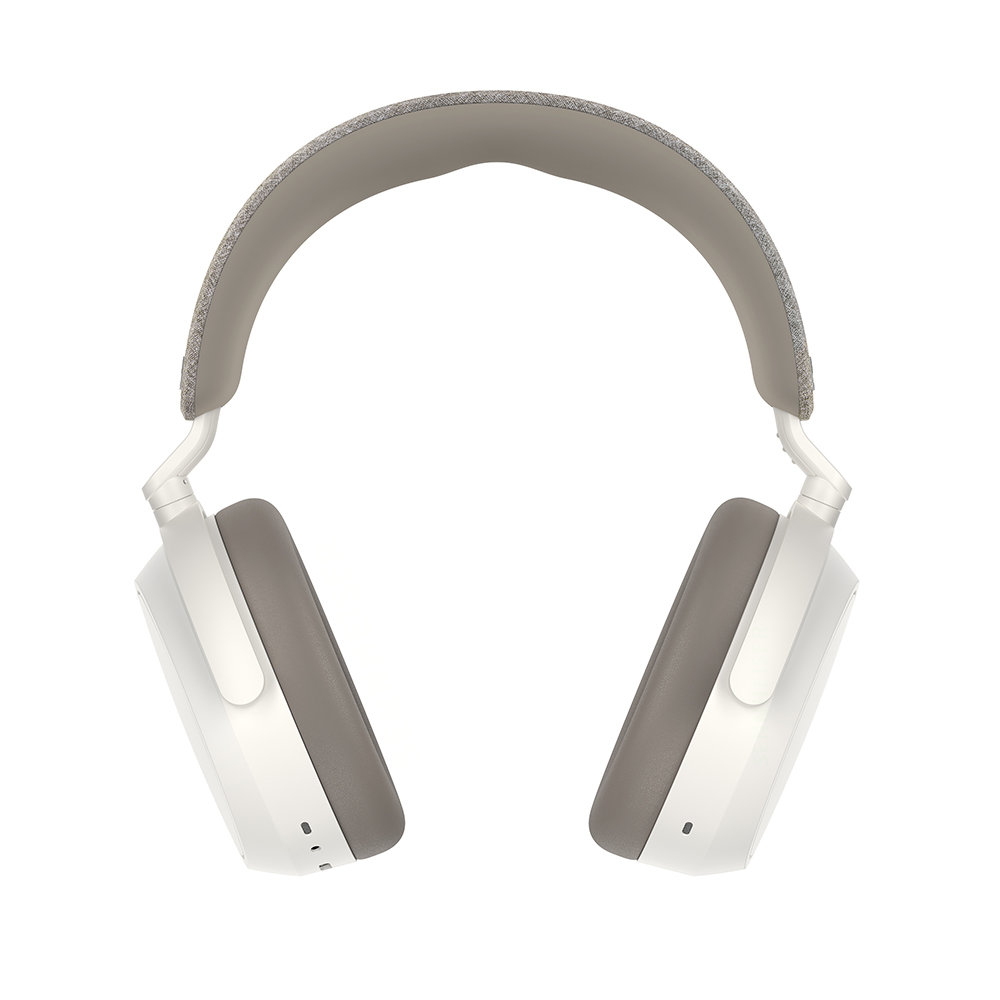
Sennheiser’s Momentum 4 Headphones
The latest over-ear headphones featuring Sennheiser’s Signature Sound, the Momentum 4 headphones arrived on the market in August as the first new edition of the product in six years. The company touts “best-in-class sound, advanced Adaptive Noise Cancellation and an all-new design offering exceptional comfort.” They also boast 60 hours of battery life, among other features.
MSRP: $350.00
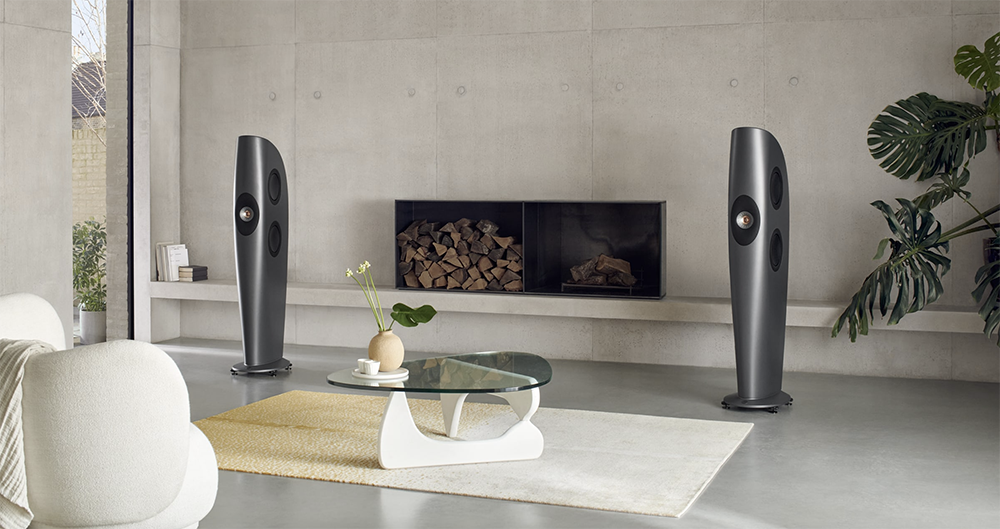
KEF’s Blade One Meta, and the Blade Two Meta
The latest high-end speakers model from KEF arrived earlier this year, and the “Meta” stands for the company’s Metamaterial Absorption Technology. The speakers, more than a decade in the works, feature KEF’s Single Apparent Source technology which, the company says, “aims to achieve the acoustic ideal of a point source, where low, mid and high frequencies radiate from one point.”
MSRP: $34,999.98 (Blade One), $27,999.98 (Blade Two)
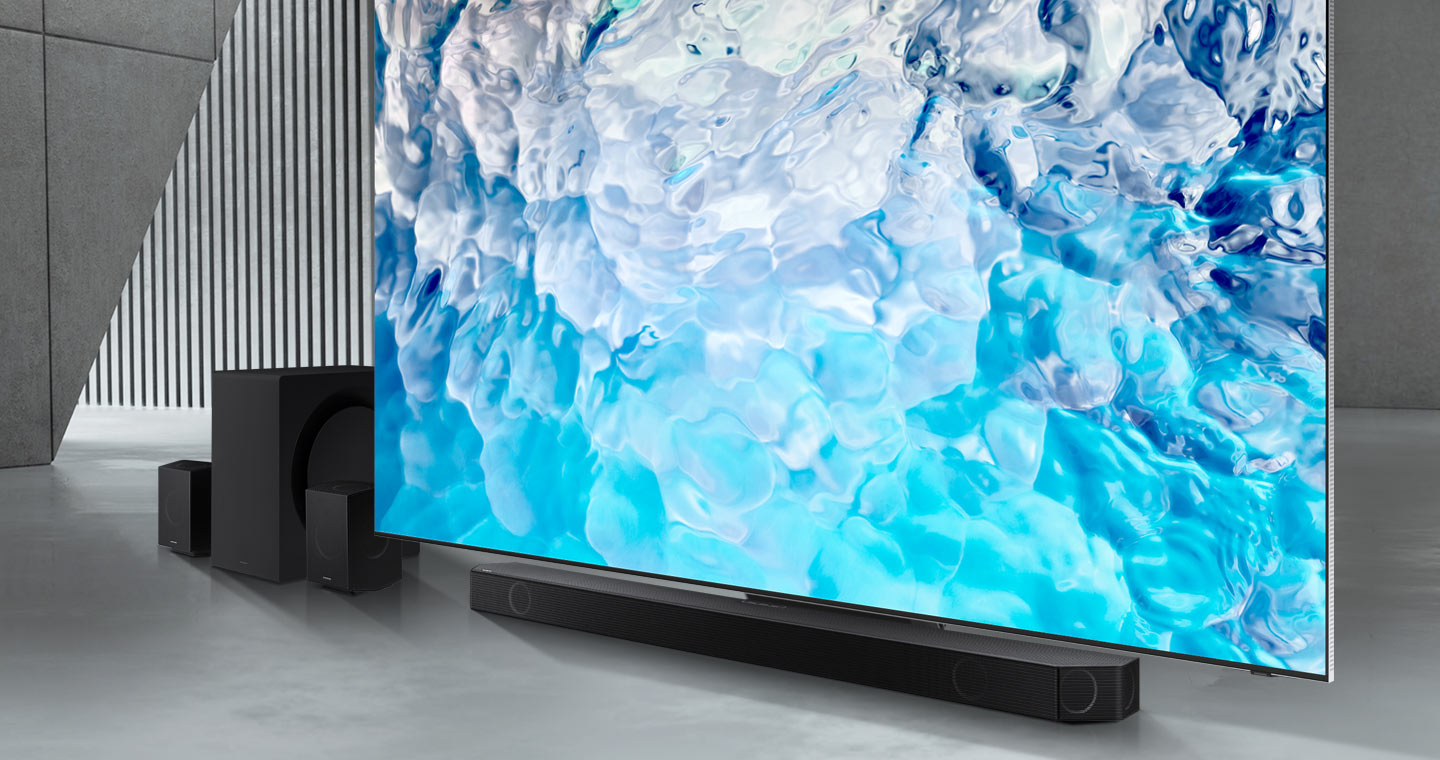
The Samsung HW-Q990B 11.14ch Soundbar
Another soundbar new this year is this one from Samsung, which boasts of being the world’s first built-in wireless Dolby Atmos connection. Sporting both Dolby Atmos and DTS:X technologies, this soundbar offers 11 channels, one subwoofer and four up-firing channels. It’s part of Samsung’s Q Series, and the company touts “perfectly synchronized audio that uses every speaker in compatible Samsung TV and soundbars.”
MSRP: $1,399.99
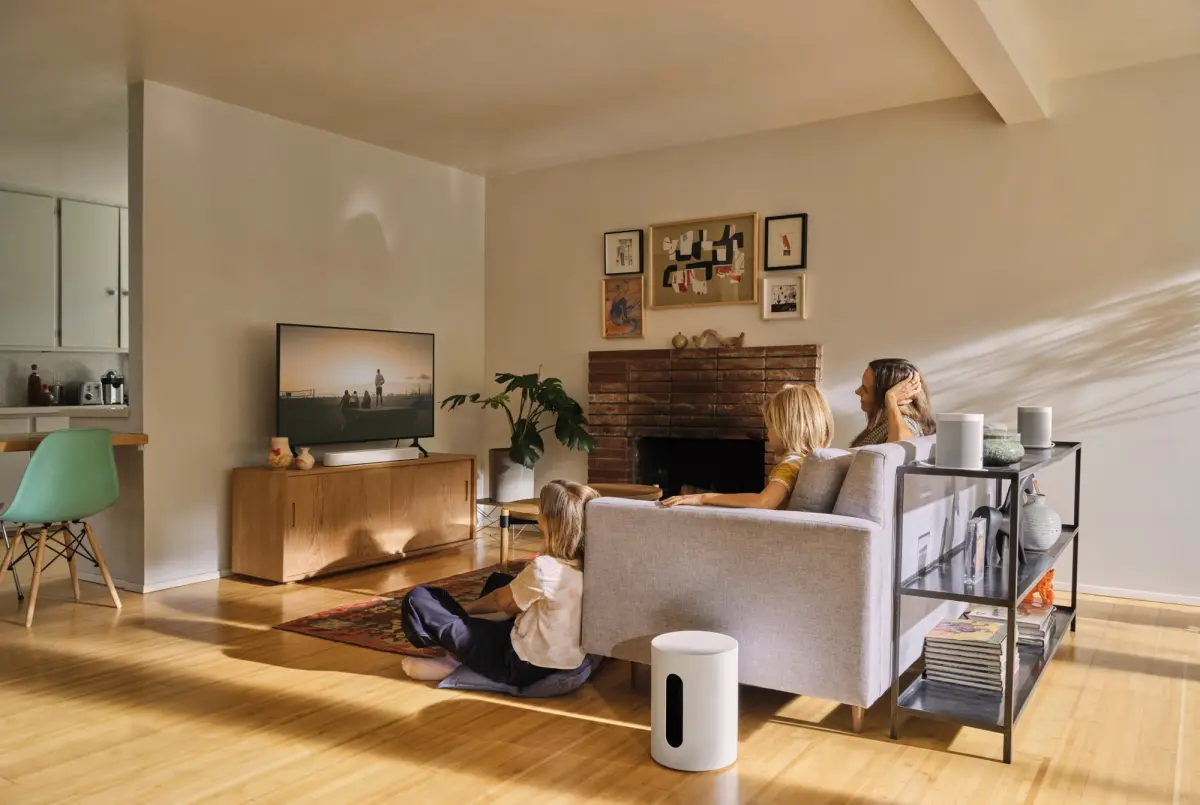
Sonos’ Sub Mini
Introduced back in September, the latest subwoofer from Sonos offers what the company describes as a “curvy” design. Available in matte black and white colors, the Sub Mini has its ability to boost bass as a key selling point. The product, which arrived in early October as the latest component of Sonos’ home theater lineup, is able to pair with the likes of Beam, Ray, One and One SL.
MSRP: $429

Dynaudio’s Focus Range
Earlier this year, Dynaudio debuted its new Focus series of stereo speakers. Replacing the Focus XD range from five years earlier, the Focus series includes the Focus 10 (described as a two-way stand-mount speaker), the Focus 30 (a two-and-a-half-way floor-stander) and the Focus 50 (a three-way floor-stander). The range supports several major streaming products, including Spotify Connect, TIDAL Connect, Apple AirPlay 2, Google Chromecast, Qplay, UPnP, Netradio and Bluetooth.
MSRP: $5,500 (Focus 10), $8,250 (Focus 30) and $11,000 (Focus 50).

JBL Flip 6
JBL’s latest portable Bluetooth speaker is the successor to the earlier Flip 5, and arrived in late 2021, described by the company as a “two-way” speaker system. Waterproof and dustproof, it comes in a variety of colors, including Dusty Pink, Grey Stone, River Teal, Fiesta Red, Ocean Blue, Midnight Black, Steel White, Forest Green and Squad. The speaker is touted as offering 12 hours on single charge.
MSRP: $129.95
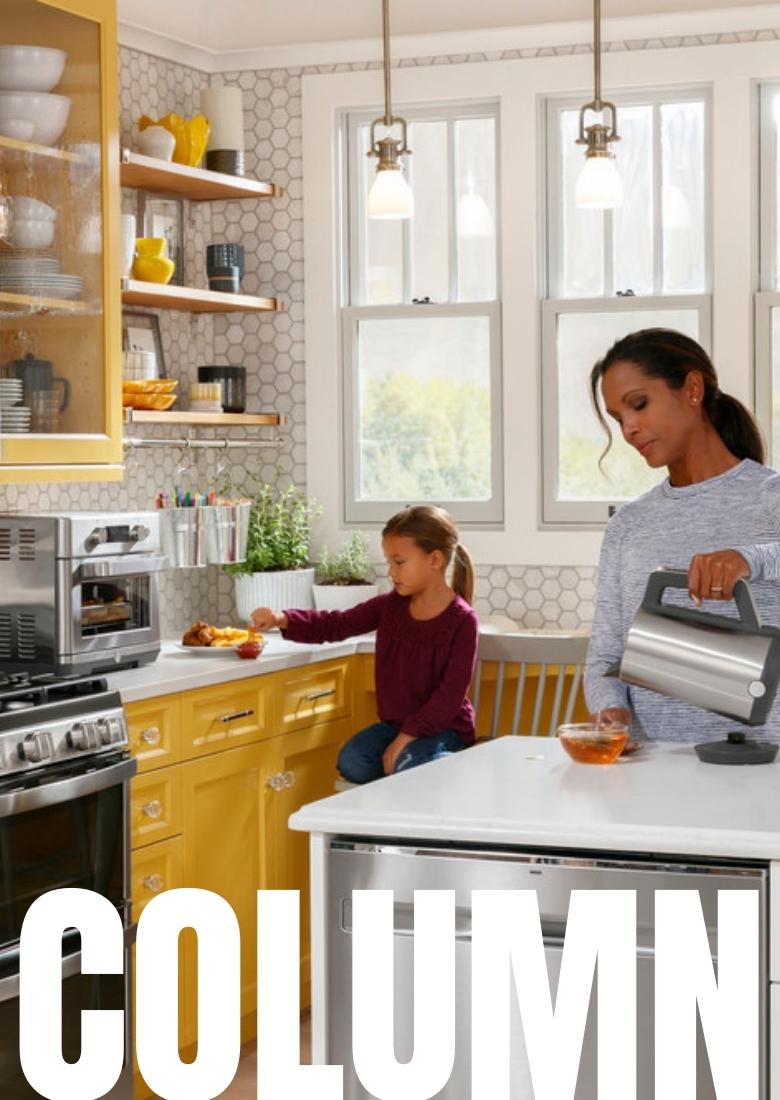
APPLIANCES
Kitchen Counter Clutter
Sales of small appliances are expected
to continue to grow over the next 12 months
By John R. Quain
Inflation, hybrid work, the escalating costs of eating out—they’re all trends driving consumer buying habits in kitchen countertop appliances. And while manufacturers don’t expect to see the same stratospheric levels of sales witnessed during the height of the pandemic, they do expect continued growth in smarter appliances over the next year.
“During COVID, demand was off the charts,” said Dan Unger, corporate communications manager at Panasonic, “so we’re not going to continue to see that, but we’ll still see positive growth this year.”
Consumers also say that in the post-pandemic world they plan to continue healthy eating habits such as cooking at home versus hitting fast-food restaurants. In one survey, 92 percent of families said they plan to continue eating together at home with the same regularity after the pandemic. The survey, conducted by sales and marketing agency Acosta, also found that 20 percent of respondents said they expect to eat at home even more frequently in the future.
No doubt, those findings have been bolstered by the inflationary spasms experienced over the past few months, which have driven the cost of dining out even higher. Indeed, a more recent Acosta survey found that 54 percent of consumers are cutting back on going out for meals due to inflation.
No Furby of the Kitchen
However, as consumers return to some of their pre-pandemic activities and busy lifestyles, “we expect them to continue choosing appliances that will make cooking easier and more convenient through technology and meaningful innovation,” said Jessica Shuck, consumer insights senior manager for GE Appliances.
But there’s no single product that’s expected to catch on like the great Instant Pot craze of 2019. However, one countertop appliance feature is definitely in demand: smart connectivity. At the IFA consumer electronics show in Berlin last September, where white goods dominate, many manufacturers were showing app-controlled appliances, including those from the likes of Panasonic, LG and Samsung. IFA exhibitors expect remote control to be a popular theme this year, and according to one study, consumers are keen on such features, with 35 percent of respondents reporting that the most important feature in appliances is wireless smartphone control.
Wi-Fi connections in appliances have an added benefit in that they allow manufacturers to upgrade products over the air. When GE Appliances rolled out an air fryer software update, for example, in a little over a month 13,000 owners had downloaded the upgrade, and there was 143 percent jump in the use of air fry modes on connected ovens, according to the company.
The Internet-connected trend has even filtered down to coffee makers, such as GE’s Wi-Fi connected Cafe that can be controlled and programmed remotely using the company’s SmartHQ app. For consumers who need to be caffeinated as soon as possible in the morning, it’s a convenience they can’t live without. GE says its data and analytics teams has found a strong affinity among consumers for stylish and tech-forward designs. The $349 GE Café Specialty Drip Coffee Maker reflects those trends and like others now in the market it has received the Specialty Coffee Association’s certification that covers brewing temperature and time specifications.
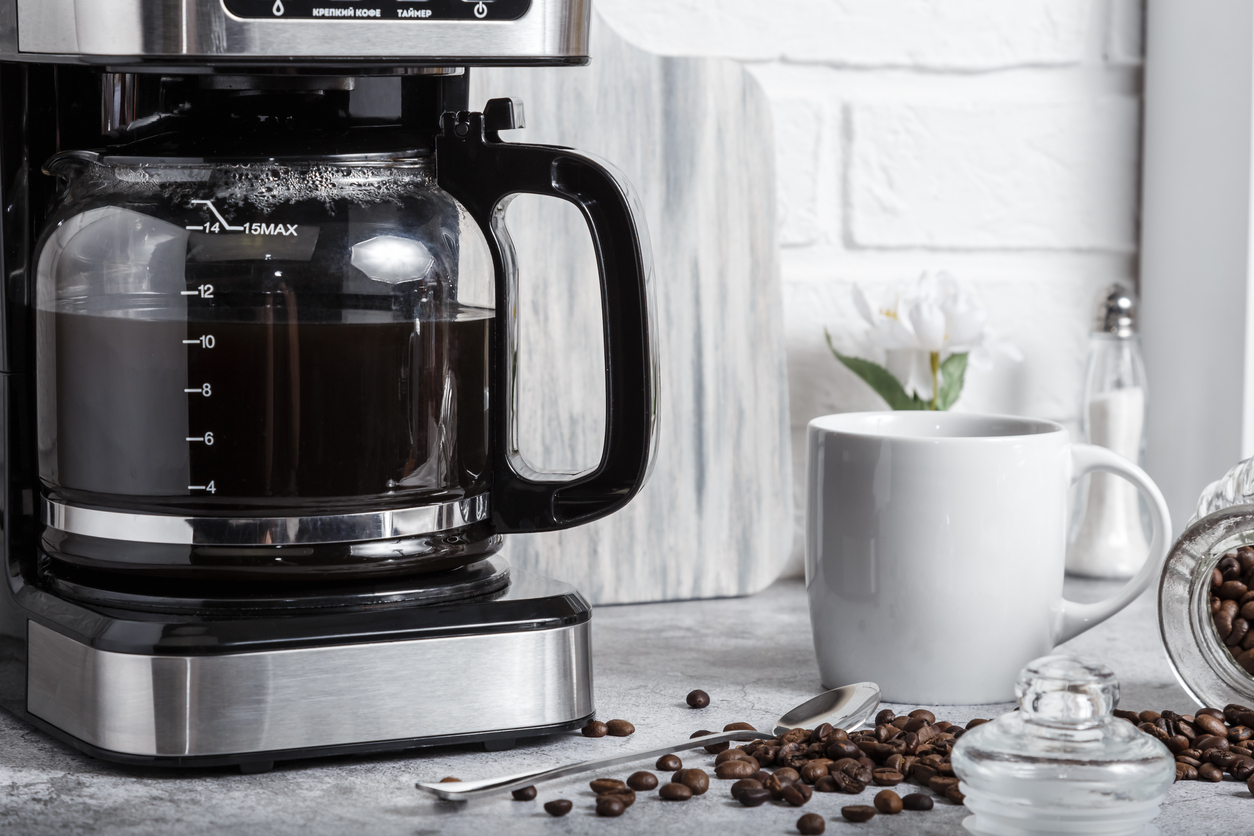
Continuing Trends
“In another survey we conducted, we found that drip coffee makers are by far the most common coffee making appliances, with nearly two-thirds of drip coffee maker owners using it daily,” said GE’s Shuck.
Paula Pennington, senior product manager for Hamilton Beach Brands, says other popular categories in kitchen countertop appliances remain strong, such as slow cookers and air fryers.
“Through the pandemic, consumers realized the benefits of unattended cooking with slow cookers over other appliances,” said Pennington. “Now with the return to work, the appeal of slow cookers increases as they offer the ability for food to cook while the consumer is at the office. In contrast, air fryers offer fast or short cooking cycles making them useful for cooking dishes quickly.” Air fryer ownership, for example, is still a mainstay with 52 percent of households owning at least one air fryer as of March 2022, according to GE.
Manufacturers and retailers will still have to be alert to unexpected cooking trends in the coming year, thanks in part to the power of social media. Nugget ice makers, for example, had a low profile until they became an Internet sensation with TikTok videos touting the appeal of restaurant quality, chewable ice at home. So who knows? If the right videos go viral, the next appliance craze could be ice cream makers or pasta machines.
Multi-Talented Oven: GE Digital Air Fry 8-in-1 Toaster Oven
Once just a convenient way to quickly heat up a slice of leftover pizza, toaster ovens have become something of a Swiss Army knife in today’s kitchens offering — not just for toasting but also convection cooking, slow cooking and even air frying. GE’s $219 Digital Air Fry 8-in-1 Toaster Oven epitomizes this new all-in-one trend.
As one might expect, the GE 8-in-1 excels in traditional countertop oven tasks. The toaster function, for example, has 7 shade settings, from light to dark—plenty of variety to accommodate our tastes and different breads—and the digital control gives users precise baking control up to 400 degrees. It also performed admirably in convection cooking, delivering crispy on the outside but tender on the inside chicken. Additional cooking modes include broiling and “proof” for maintaining a warm temperature that’s ideal for helping dough rise before baking.
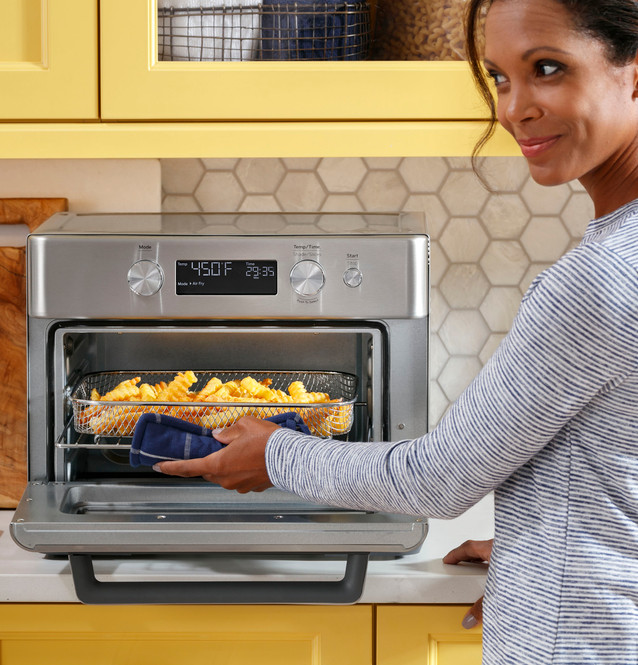
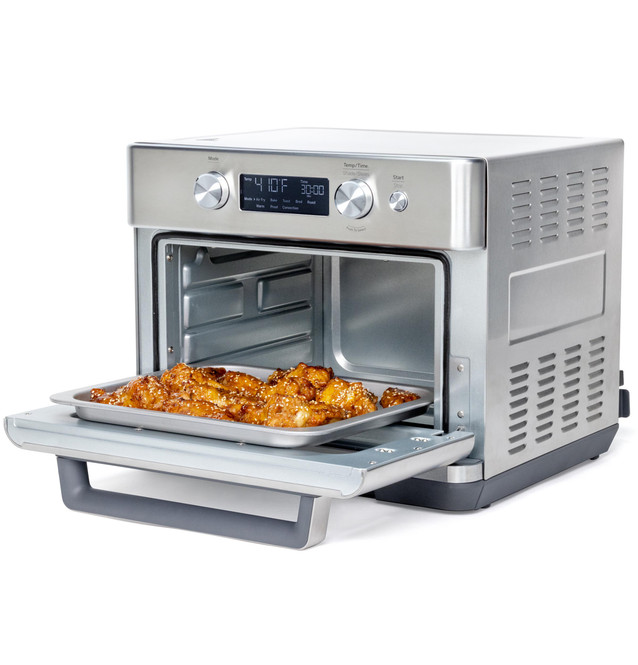
Many consumers will, however, be most interested in the added air fryer feature, which can be a healthier way to cook because it doesn’t require oil and is faster than baking. In our cooking tests, the oven did an excellent job as an air-fryer, belying the idea that consumers need a separate, dedicated air fryer. It can also accommodate more food for air frying than the usual small baskets in air fryers, which usually only hold enough vegetables or frozen chicken for one or two people.
The only downside is the GE 8-in-1 oven’s size. Sure, it can roast an 8-pound chicken or bake a 12-in. pizza but that versatility comes in a 14-in. by 16.9-in. by 17.7-in. size. That’s about 30 percent bigger than a traditional toaster-only countertop oven.
The GE 8-in-1 does not include Internet connectivity. But if consumers want remote Web control, there’s the GE $449 CAFÉ Couture Oven with Air Fry that has Wi-Fi connectivity. The Wi-Fi feature also allows for voice to control via Google Assistant or Amazon’s Alex, as well as the ability to download new recipes and features.
In survey after survey, consumers complain that while they might enjoy cooking, they hate cleaning up. So it’s noteworthy that the GE oven possesses one of the easiest to clean crumb drawers we’ve ever seen. It pulls out straight from the front and its smooth, stainless-steel surface makes it easy to wipe down or wash with soap and water. It’s not a high-tech component, but after dinner, it’s a very welcome feature.

BUSINESS
Once Consumers
Buy a Smart Product,
They Are Primed
to Upgrade
Leverage your customers’
brands loyalty to new releases
By Jeff Unterreiner, President, U.S. Connected Living, Assurant
Since the introduction of the iPhone, consumers have become accustomed to upgrading their smartphones as new models become available. They also have tended to become loyal to one brand, e.g. Apple, Samsung, etc. We are starting to see the same behavior transfer to connected products. Research from Assurant shows that repurchase intent for the same brand or type of product is high after the initial purchase.
Nearly 40 percent of U.S. consumers in 2021 said they definitely planned to buy a newer model of their connected devices when the next version is released, a 26 percent increase from 2019. Those who said they were definitely or likely to upgrade when a newer version becomes available exceeded 60 percent in 28 of 29 connected product categories. Not surprisingly, Gen X and Millennials are the most apt to upgrade.
The trend is most prevalent for products that see significant change with each new generation or are driven by seasonal demand such as holiday gift giving. It also applies to products that rely on rechargeable batteries, where the user experience can decline over time as the battery degrades.
Think of smart toys, smoke detectors, door locks, baby monitors and watches, where at least 69 percent of owners said they would upgrade. Even at the lower end of the range, a full 45 percent of Bluetooth headset owners indicated they would upgrade.

Give Consumers the Confidence to Purchase
While it’s clear that once consumers buy a connected product, most tend to remain loyal and buy again, the challenge is getting people comfortable with purchasing and using the devices in the first place.
Finding that comfort level requires knowing what makes consumers nervous about purchasing. Even though technology has become more prevalent in our lives, consumers’ intent to buy has continued to exceed ownership in the majority of connected product categories.
What’s holding them back? When it comes to the purchase and usage of connected products, primary barriers relate to connecting, installing and support. A common thread is the fact that the consumer experience after the sale did not match expectations. This, in turn, can lead to elevated returns and limited chances for future upgrades.
In 2021, the top cited frustrations were:
• Problems connecting to Wi-Fi or smartphone (22 percent).
• Insufficient troubleshooting resources (18 percent).
• Fear that the item would break (17 percent).
• Troubles with installation (14 percent).
While consumers have voiced these frustrations consistently over the last five years, issues with connecting to Wi-Fi or a smartphone jumped 83 percent from 2019 to 2021. This likely was due to increased connectivity needs caused by the onset of the pandemic.
In 2021, 66 percent of consumers connected at least one new or replacement device to their home Wi-Fi for the first time, a 65 percent increase from 2019. Of those who did, 25 percent experienced initial setup challenges, 19 percent said they had internet connectivity issues and 16 percent couldn’t connect to Wi-Fi or their phones. Overall, frustrations span both demographics and income. Only technophiles have less concerns.
While these issues can disrupt the relationship between the consumer and the retailer or OEM, research shows that post-purchase support can improve loyalty and give people the confidence to buy no matter where they purchase. Even though purchase intent has largely stagnated over the past five years, consumers increasingly are saying they would buy if they had the peace of mind that comes from complementary services such as technical support, extended warranties and identity protection.
In 2021, 70 percent of consumers surveyed said they’d be more likely to go through with a connected product purchase if given one or more of these value-added services. That number has steadily risen from 61 percent in 2016.
Providing consumers easy access to personal guidance on how to install, connect, use and troubleshoot a purchased product has proven to produce high net promoter scores (NPS), turning customers into advocates who actively refer others.
Perhaps it’s not just a coincidence that, on average, technophiles own the most connected products per household and are the most frequent buyers of premium tech support and smartphone protection programs.
Extending the customer relationship from the initial sale to when they might consider upgrading is a smart move when you consider the complexity of installing, connecting, using and troubleshooting many connected products. Providing helpful support can engender trust and loyalty that can pay dividends with each new model introduction.
This approach has proven successful with smartphones, as it provides customers with assurance and added value from the moment of purchase. The consumer electronics industry has much to gain from taking the same tact.

SOCIAL MEDIA
Useful Tech Accessories
For Social Media
Know what tools will boost
your content creations
By Brenda Thelusca
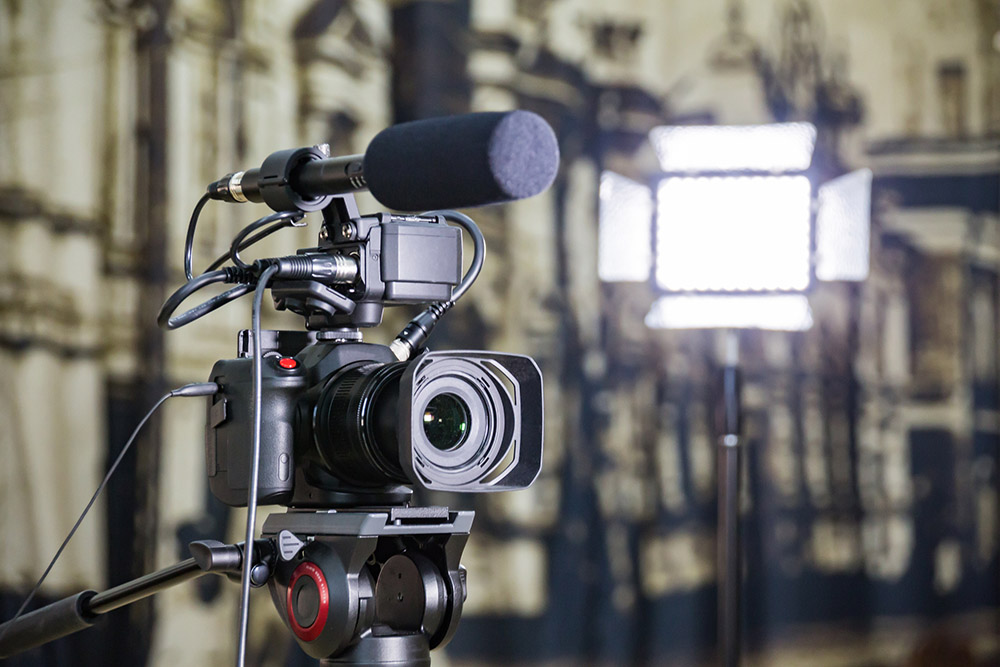
Pictures used to be the main attraction on social media, but due to the growth and popularity of videos, pictures are becoming less of a priority. Now the famous picture-sharing social media app, Instagram, has moved on to promoting Reels to its users. Some people welcomed the change, but creators had to become familiar with making video content. Not everyone knows what is needed when it comes to video content, but that’s where I step in. Having a background in videography and working with social media, I can advise on what tools are helpful when creating this content.
The Right Recording Device
Make sure that your phone can handle recording high-quality video and having the app you’re recording on open. Sometimes phones can’t handle apps that require a lot of power, causing users to have issues with the app freezing while they record. Smartphones like the iPhone, Samsung Galaxy series and Google Pixel are known for their amazing camera quality and nighttime photography. If your phone isn’t the best choice, I recommend using a DSLR camera because these types of cameras are built for recording video and can still take high-quality photos. A great feature of DSLR cameras is you can record as many times as you want without having to cut your recording short and start over.

Storing the Content
Depending on the SD card you buy, you have more storage space on a camera. I recommend SD cards that have 32GB if you are more focused on pictures, and if you want to record more video 64GB is a better fit. Some DSLR cameras even have Wi-Fi sharing capabilities that allow the user to send photos directly to the cloud or online drive. I recommend that for people who are not by their computer often and need to get their photos or videos up quickly. For people with more time, they can choose a camera without this feature, but they need to make sure they buy an SD card reader for their laptop or computer if they don’t have an SD card slot built in.
Editing Effects
When recording on a camera, users have more freedom to edit their videos with certain effects that aren’t on social media apps. While Instagram Reels and Tiktok have editing options available, the small list of transitions and effects isn’t the best option, because they are basic edits that don’t catch viewers’ attention. Whether you have a phone or camera you should have a green screen when filming for social media, because Tiktok has preset green screen backgrounds like the ones used in Zoom. Using a green screen while filming makes it easier for the app’s software to apply the virtual background smoothly. Although the background won’t look as realistic as a professionally edited one, it gets the point across and is good for more comical videos. If you want more professional videos for your social media page, then a green screen and video editing software will be needed. Tutorials on YouTube and Tiktok can guide users on how to do certain effects with editing software.

Creating a Professional Video
When recording a video, it’s hard to keep the video steady if you’re using your hands to support the camera. Holding a camera steady is an arm workout, and my arms have gotten sore from holding my camera for too long. Phone and camera tripods are useful for getting those nice shots without having to sacrifice your arms, so it’s best to get a tripod that can support the weight of your phone or camera.
One thing people forget to check for is the size of the tripod and if it can properly fit your phone or camera. Make sure that your tripod can hold your device so you can achieve a nice aerial angle if you’re trying to show off a product. If you want to record the subject while moving, having a gimbal will keep the camera balanced and steady while you move around. If this causes there to be any shadows covering the main object of the video, it would be helpful to have an extra light source. This can be in the form of an LED light panel, a phone light or a flashlight.
The Secret Weapon of Filming for Social Media
Lastly, the most helpful tool when filming for social media is a camera remote, which can be found on Amazon. This tool is only for those who are recording footage on their smartphone. I can’t count how many times I end up doing retakes when making Reels or TikToks. Shooting video is difficult without a team, and most videos on social media are self-made. Instead of rushing to pause the video recording while filming, users can pause recordings with a press of a button. This saves time when recording video, because now users don’t have to pause the recording manually and edit out the parts where they walk up to pause the camera.
It’s best to record the footage you want as perfectly as possible to save time when editing. Now users can utilize the entire time limit they are given when recording on social media. Remember that social media is fast-paced and every second counts, so now you have the tools to leave the best impression possible.
KEY TAKEAWAYS:
- If you’re alone when making video based content, make sure to have camera remote so you can pause when needed while you are recording.
- It’s impossible for the human body to sit completely still, to avoid shaky video footage use a tripod that can hold your smartphone or camera in place.
- Having a smartphone that can handle running and recording on apps like TikTok and Instagram will prevent the device from crashing and losing valuable footage.

DIGITAL HEALTH & WELLNESS
Tech for Better Hearing
and Wellbeing
An update on improvements in hearing aid tech,
as well as fitness and sleep products
By Mike Kobrin
According to the National Institute on Deafness and Other Communication Disorders (NIDCD), nearly 25 percent of Americans between the ages of 65 and 74 have hearing loss severe enough to affect their daily life, and that number jumps to 50 percent for people over the age of 75. The organization also estimates that close to 30 million adults in the U.S. may benefit from hearing aids. But the stigma and price of hearing aids has presented a major barrier to widespread adoption.
When we last reported on the market earlier this year, the FDA had just approved over-the-counter hearing aids, set to take effect in mid-October 2022. This was exciting news for taking control of your hearing health costs and eliminating the need for a doctor visit, and the blurring of lines between hearing aids and wireless earbuds reduces the stigma. In a recent press release, FDA Commissioner Robert M. Califf, M.D., stated that “establishing this new regulatory category will allow people with perceived mild to moderate hearing loss to have convenient access to an array of safe, effective and affordable hearing aids from their neighborhood store or online.”
Music-based wellness products aren’t limited to hearing aids — fitness and stress reduction have become two of the most important and popular applications of wellness tech. From smart watches and meditation gadgets to full-size breathable workout headphones, we’re seeing more innovation designed to get people using music to realize better health and happiness.
OTC Hearing Aids
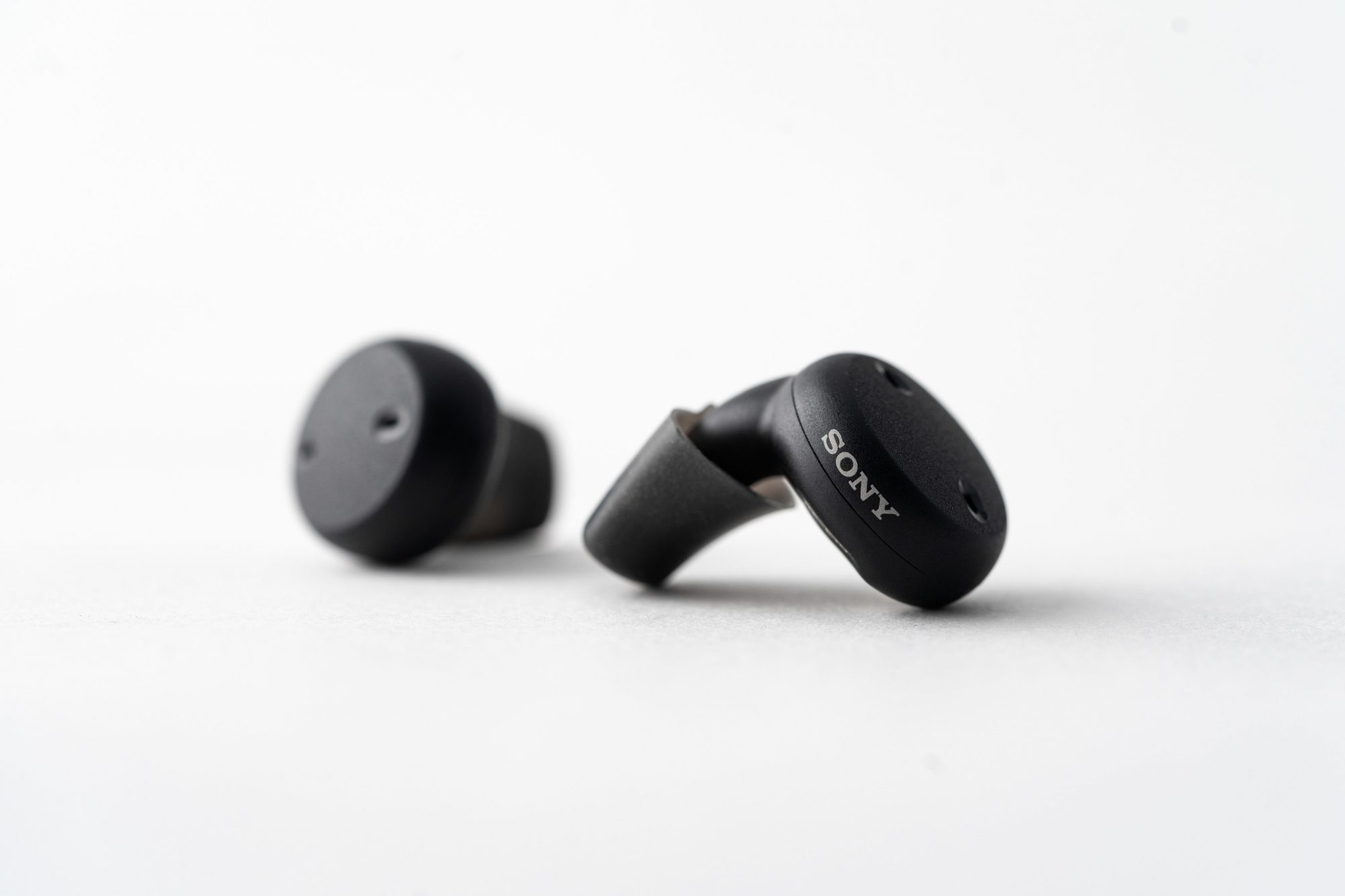
Sony CRE E10 ($1299) and C10 ($999)
The CRE E10 is the result of a recently announced partnership between Sony and Danish hearing aid maker WS Audiology. These impressively small devices look just like regular wireless earbuds, but they’re FDA-approved medical devices with app-controlled adaptive assistance for mild to moderate hearing impairment. At $1299, users are paying for compactness, as these are extremely unobtrusive. The E10 also streams music and calls via Bluetooth; the cheaper ($999) C10 model is even more compact but lacks streaming. The company claims “up to 26 hours of continuous use,” but that’s only with the included Qi-compatible wireless charging case.
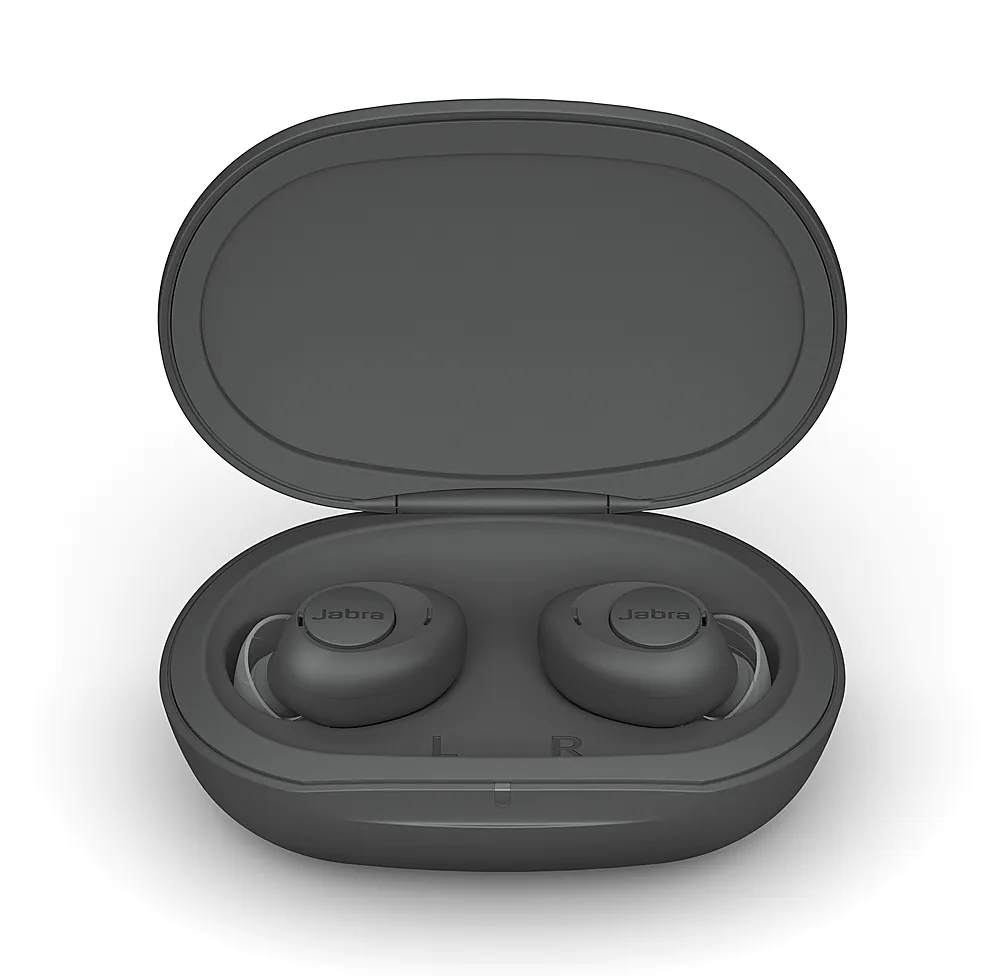
Jabra Enhance Plus ($800)
Jabra’s Enhance Plus OTC hearing aids have been out since February this year, but until this fall, they have been available only through select hearing clinics. Intended for mild to moderate hearing loss, they’re roughly 40 percent smaller than Jabra’s Elite 7 Pro earbuds, and they let you stream calls and music via Bluetooth. The setup and control app (currently iOS-only) helps you fine-tune and personalize the earbuds’ fit and sound, giving you multiple hearing assistance modes including an adaptive setting. You get 10 hours of battery life plus another 20 from the included charging case.
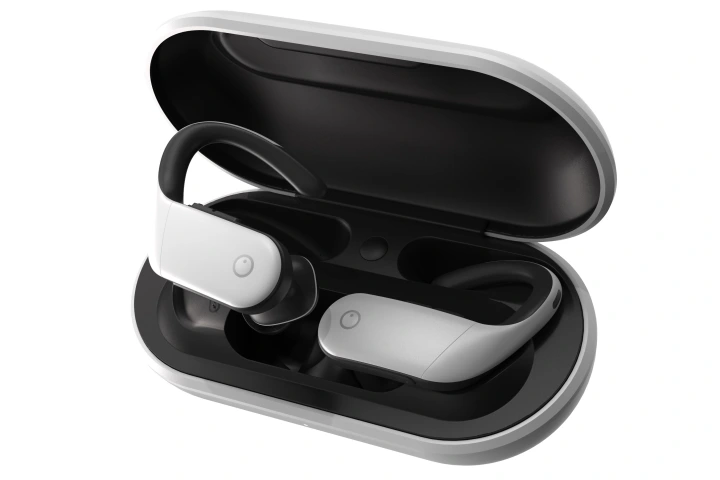
Olive Union Olive Max ($299)
The Olive Max is priced at the lower end, but they offer the same features as the other leading models covered here, albeit in a slightly less discreet form factor. Simply use the included app to administer a 5-minute hearing test to complete setup, and the earhooks keep these earbud-style hearables securely in place. Improvements over the previous model (Olive Pro) include more volume, AI-powered adaptive hearing assistance, better clarity, and more effective noise reduction. Bluetooth connectivity lets you stream music and calls, and you get 10 hours of battery life plus 20 more from the charging case. Recommended for mild, moderate or severe hearing loss.
BIG MOVES
The FDA’s new guidance has been creating waves in the hearing aid industry; we’re seeing headphone companies and hearing aid manufacturers consolidate in anticipation of an exploding market in the coming years. Bose cut its health division earlier this year and discontinued its SoundControl hearing aid line, but the company has partnered with hearing aid manufacturer Lexie for “powered by Bose” products like the Lexie B1 ($899). Unfortunately, like Bose’s SoundControl device, the B1 doesn’t stream music or calls. Sennheiser’s consumer division was also bought last year by another hearing aid maker, Sonova, and we’re awaiting product launches in this space soon. Sony’s recent partnership with Danish hearing aid maker WS Audiology has already yielded OTC hearing products, and Jabra’s parent company GN also happens to own hearing aid brands.
Fitness

Apple Watch Series 8 (from $399)
We’d be remiss if we didn’t mention the latest Apple Watch Series 8, which improves on its predecessor with a temperature sensor, menstrual cycle tracking, crash detection, sleep stage monitoring, and an updated Workout app. Paired with Apple’s new AirPods Pro 2, Apple Watch offers an impressive range of fitness and hearing-enhancement features.
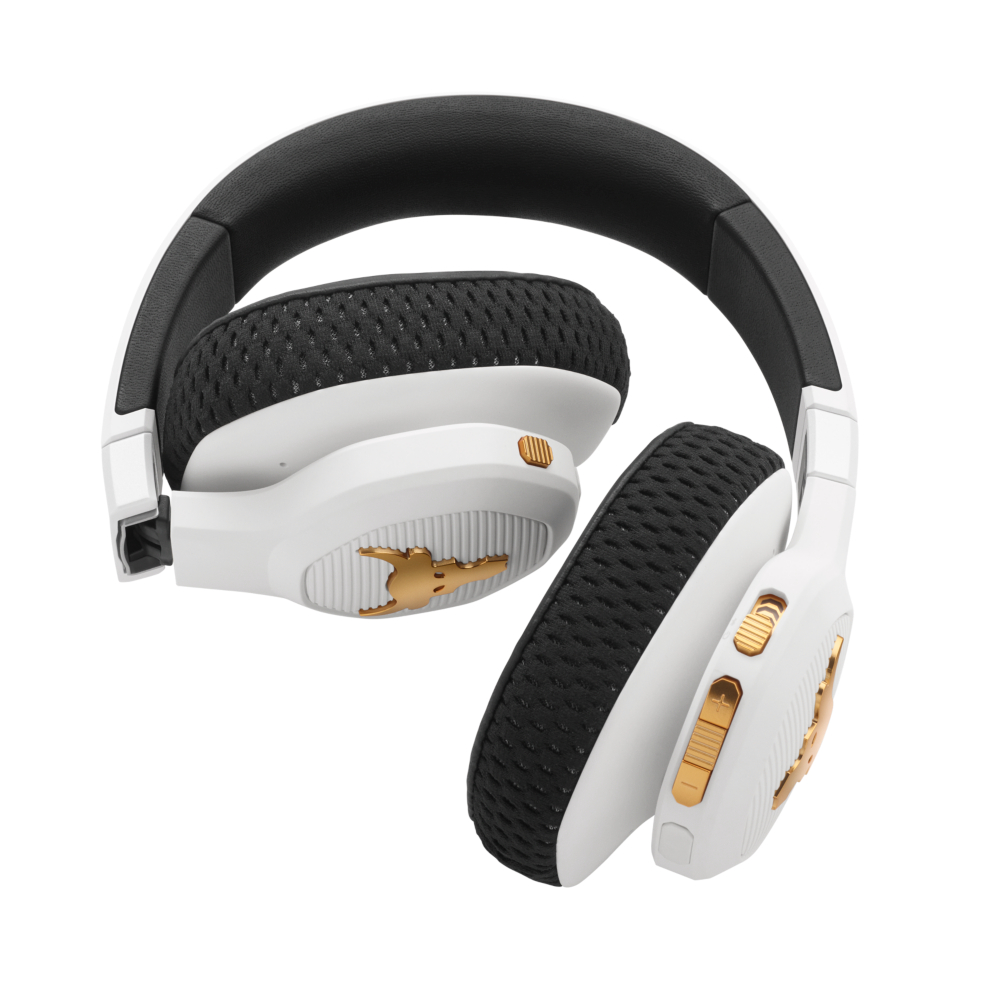
Under Armour Project Rock Training Headphones ($149)
You might not associate full-size headphones with fitness, but these are designed for workout enthusiasts who don’t like plugged up ear canals. With adaptive noise canceling, a transparency mode and auto play/pause when you put them on or take them off, the Project Rock has many of the same features as other Bluetooth headphones. They distinguish themselves from the pack with their ruggedness, as well as over-ear pads that grip the sides of your head securely for Rock-solid stability, and they’re vented to breathe and dry quickly. The 45-hour battery life and 12-month premium membership to UA’s MapMyFitness app round out an impressive package at a very reasonable price.
Sleep/Meditation

HyperIce Core Premium ($199)
This standalone meditation trainer resembles a kitchen egg timer, but its built-in electrocardiogram sensors and haptics can help de-stress your life with each session, and the battery only needs charging once every couple of weeks. Connect the Core to your smartphone via Bluetooth and you get a year of continuously curated content via the iOS/Android app that includes guided meditations, soundscapes, breath training, and soothing music updated daily.
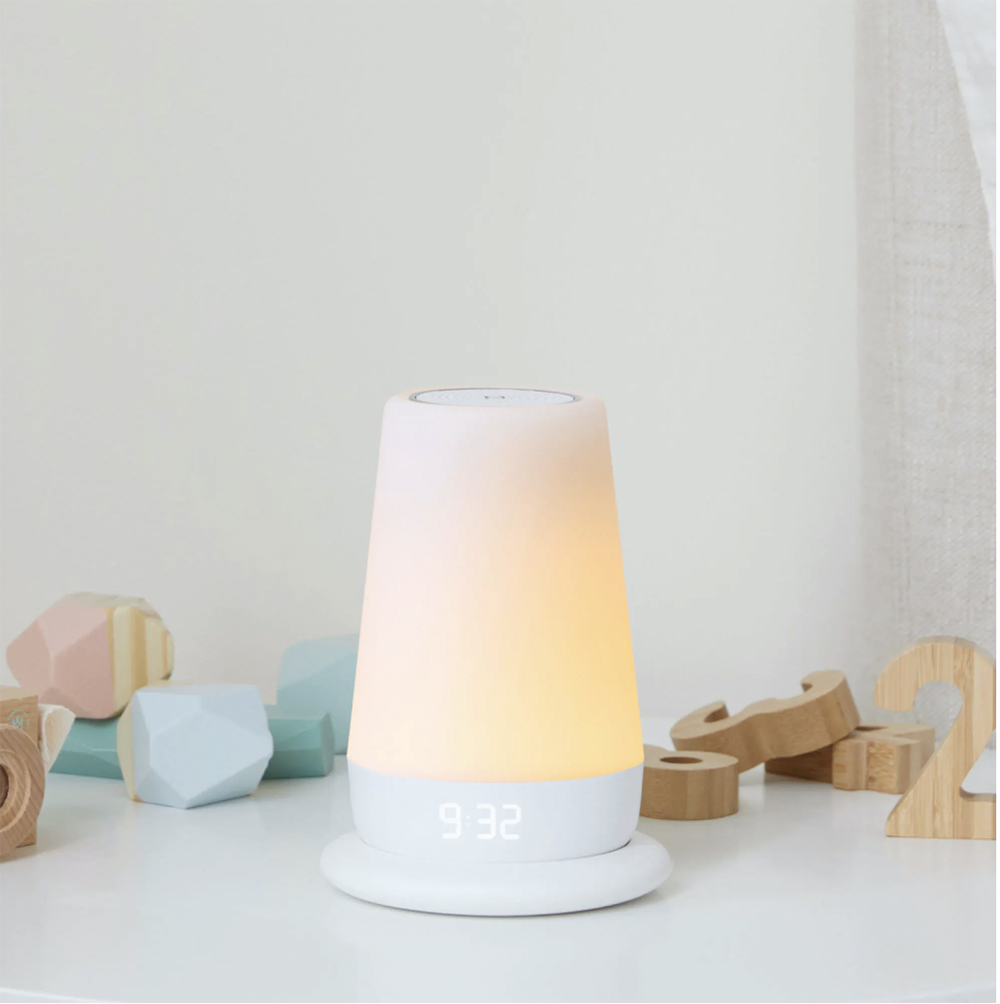
Hatch Rest+ 2nd Gen ($89.99)
Much more than a white noise machine, the Rest+ plays soothing music and soundscapes to help kids of all ages fall asleep, learn mindfulness and wake up refreshed and ready to meet the day. It also has a light that glows for use as a nightlight or for wake-up times. The device has a built-in rechargeable battery so you can grab it from its charging stand and take it with you around the house. Control it from anywhere via Wi-Fi, and the included app gives you expert-curated music, bedtime stories, parenting tips and more.
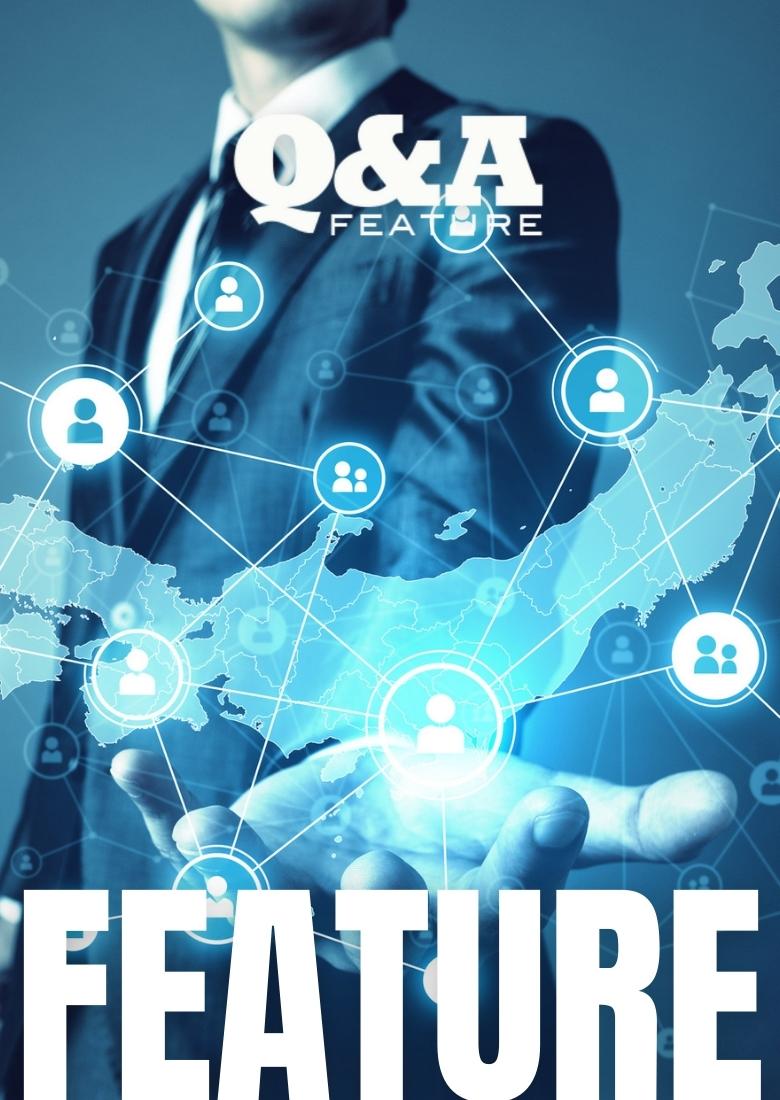
BUYING GROUP ROUNDTABLE
Groups like BrandSource, Nationwide, HTSA, and more discuss this past year
Compiled by Alec Paige and Erinn Loucks

Name a few major programs for your members that you have altered to meet their changing needs. What do you plan to introduce moving into 2023?



“Best-selling author John Maxwell said it best: “Change is inevitable, growth is optional!” This resonates throughout BrandSource, where we’re seeing our members’ needs accelerate as the market and consumer demand expand exponentially. We view this as opportunities to provide a streamlined integration of solutions and services that allow our members to grow profitably while giving them the greatest gift of all — time. Our focus for 2022 has been around three key solutions: MarTech strategies; delivering more money; and leveraging our ‘M’ Factor, which capitalizes on our greatest asset, our members. We’ve challenged our members to “own It,” not only for their businesses but in support of their peers as well. Our unique region structure allows members to share with those in their area while forging deep-seated bonds. Idea sharing, best practices, solution support and networking allow the ‘M’ Factor’s magic to happen.”
Jarred Roy, vice president of BrandSource






“Looking at 2023, we’re excited about major programs we will introduce to meet members’ ever-evolving needs. The forward-thinking education that Keith Esterly provides has focused on relationship science and customer relationship training, which we consider ‘outward’ dealer training. In 2023, we will respond to the demand for more ‘internal’ team training by delivering inside staff development and management training for members. This dovetails nicely into culture training and will help members retain employees, thereby growing their businesses. At the HTSA Fall Conference, we will also announce another major program that will be back by popular demand: Lightapalooza 2023. Countless vendors and members have requested we provide and expand this event, so we are doing exactly that in February in Phoenix. In fact, we’ll also open Lightapalooza 2023 to the custom installation community, as we believe this opportunity is bigger than HTSA and vital to all our peers and the industry as a whole.”
Jon Robbins, executive director of HTSA




“ProSource has developed deep partnerships and training in both the lighting and shade verticals. In partnership with Light Can Help You, ProSource invested in our members’ lighting the last two years. We have offered comprehensive three-day trainings to hundreds of ProSource leaders at our lighting training center in Dallas. This effort has resulted in industry-leading success with our lighting vendor partners. We have also continued to invest in our ProSource University platform. Today we have more than 4,000 users and growing. In addition, we now offer service that allows our members to customize and brand the ProSource University platform under their company’s name.
Jim Pearse, president, ProSource Buying Group




“We have created a program named ‘Marketing Made Easy’ to help our dealers market themselves via digital media, instituted a referral program with luxury appliance dealers, and are working on developing communities of dealers with business coaches.”
Richard Glikes, President & COO of Azione Unlimited





What is it like meeting in person again after a time of hybrid/cancelled/virtual meetings?



“We’ve only heard good things about our return to in-person events. During the pandemic our member dealers didn’t have the option to work from home and many were busier than ever. Being present, in the flesh, is how they’re used to conducting business. The time away from on-site shows gave us all a renewed appreciation for our in-person events and the difference that actually being there makes.”
Jennifer Baldwin, VP of Customer Experience & Events, AVB BrandSource




“There is nothing like the experience of an in-person conference. While we were able to successfully transition to virtual events during the height of the pandemic, one of the things I believe we all took for granted was the value of those in-person interactions and hallway conversations. For all the networking and business opportunities that we have on the schedule at PrimeTime, it’s often those chance meetings and casual conversations at lunch or between meetings where some of the best and most impactful connections are made.”
Patrick Maloney, EVP, Membership, Nationwide Marketing Group






“We have enjoyed and felt the fantastic energy and sheer joy of being in person again, and as a result, have expanded our live events and programs accordingly. Both our Spring and Fall HTSA Conferences have record attendance, which also shows that our members and vendors are feeling the same way about in person meetings. By the end of 2022, our chief learning architect, Keith Esterly, will have provided HTSA Members with about 15 in-field educational events, touching 40 different companies. We’re thrilled to positively engage with and impact members. Sometimes we go to them, other times we bring them to us at a common regional location for ease of travel.”
Jon Robbins, Executive Director of HTSA




“Meeting face to face at the CEDIA show was very productive and it allowed us to emotionally re-connect with our friends and business partners. There were handshakes and hugs at every turn.” – Jim Pearse, President, ProSource Buying Group
“The energy and enthusiasm makes you feel warm inside. It’s great to be back together again.”
Richard Glikes, President & COO of Azione Unlimited





What is the biggest concern being voiced by your membership as we move into the new year, and what are you offering to your retailers to address that concern?



“Mindsets have changed, and are changing, to address real issues seen in 2022 and those looming in 2023. One of the biggest concerns being voiced continues to be staffing. It’s no secret that labor challenges loom beyond our industry, which we’re seeing nationally and locally in every facet of daily life. Skilled jobs are being bid for by other sectors that are outpacing the retail comp model, and unskilled positions aren’t being filled given the shortage of real labor. But regardless of the position or how it was filled, businesses are looking to extract as much value as possible from everyone within their organizations. To that end, a key BrandSource initiative, our exclusive HRSource Handbook, guides our members through the core aspects of today’s staffing needs and expectations with expert advice on hiring, training, motivating and retaining employees. Add to this our integrated partnership with CareerPlug, an industry-leading online hiring service, which is yet another solution we brought in 2022. Watch for more to come in 2023!”
Jarred Roy, vice president of BrandSource




“I don’t think we’re alone in that our members have plenty of questions and concerns around related to the economy. During PrimeTime this past August, we heard from Wells Fargo economist Charlie Dougherty, who walked dealers through the current market conditions, how spending is normalizing and what to expect over the next few quarters. But those are all things that are out of the hands of the retailer. Our message right now to members is to focus on the things they can control in their business. Things like how they attract customers and improving their digital presence. Take this opportunity to get back to the basics of business and reinvest in the areas that maybe didn’t get as much attention as they needed over the past two years.”
Patrick Maloney, EVP, Membership, Nationwide Marketing Group






“There are two primary concerns being voiced by our membership. These are the supply chain for both product and talent, and we are providing guidance and resources for them. During our 2022 Spring Conference, we delivered sessions and strategies for employee hiring and retention. On the inventory front, we invited specific Vendors to share real-world updates on their product inventory and ways to provide options to customers in challenging times. We will continue this focus at our Fall Conference, where we’re including classes on culture change to help drive employee retention in addition to improving inventory processes. Another way HTSA is addressing product inventory is via Tom Doherty, our director of technology Initiatives. Tom relentlessly monitors and evaluates our vendor inventory, providing weekly updates to HTSA Integrators via our Java Notes platform.”
Jon Robbins, executive director of HTSA






“Our membership is generally positive about current business trends, however, there is an awareness that inflation and interest at the current levels could translate into headwinds. Because ProSource placed bet on the lighting and shades category early, we are now able to expand our education into level two and three courses. This will help our members to continue to accelerate and establish a stronger position in these growing categories. We also have added McQuaid talent assessment tools and Carrer Plug recruiting services help grow success in hiring and retention.”
Jim Pearse, President, ProSource Buying Group




“There are two primary concerns being voiced by our membership. These are the supply chain for both product and talent, and we are providing guidance and resources for them. During our 2022 Spring Conference, we delivered sessions and strategies for employee hiring and retention. On the inventory front, we invited specific Vendors to share real-world updates on their product inventory and ways to provide options to customers in challenging times. We will continue this focus at our Fall Conference, where we’re including classes on culture change to help drive employee retention in addition to improving inventory processes. Another way HTSA is addressing product inventory is via Tom Doherty, our director of technology Initiatives. Tom relentlessly monitors and evaluates our vendor inventory, providing weekly updates to HTSA Integrators via our Java Notes platform.”
Jon Robbins, executive director of HTSA





What has changed and what has remained the same with your meetings?



“Perhaps the most important byproduct of the virtual shows, for us and our exhibitors, is that we now work much more closely with each of our vendor partners during the lead-up to our events. During the lockdowns we helped many of our vendor partners build their virtual booths. This gave us an even better understanding of what it is they’d like our members to take away from each show. We want to make sure they are getting their messages out to the right BrandSource members and are making the best and most efficient use of their time and resources.”
Jennifer Baldwin, VP of Customer Experience & Events, AVB BrandSource




“The buying and deals will always be a major part of the PrimeTime experience for Nationwide Marketing Group members. But the opportunity to put the spotlight on education during the past few years allowed us — and our members — to really reimagine the role of learning at each show. There are so many different pieces of information that members can gain from PrimeTime from a networking and education standpoint. I was blown away at how many folks our members brought to our most recent show in Orlando. We had some members who brought five or six different team members with them — very different from the days where just the principal or chief buyer would be there. But with our expanded touch points – whether it’s service, HR, delivery and install – we’re seeing our members bring more people from their organizations that head up different parts of their business to learn.”
Patrick Maloney, EVP, Membership, Nationwide Marketing Group






“HTSA has always been nimble, staying ahead of the curve, with strong focus on delivering a range of services for member growth and opportunity. This has remained the same both during and post pandemic. One example of this was our launch of the first-ever Lightapalooza 2022 in February. We’ve been bullish on the lighting category since 2017, adding fixtures, wellness lighting and growing Membership in this vital category. We cannot overstate the importance of lighting to both HTSA and the industry at large, and this drive by our team to help Members flourish in new areas hasn’t changed. In fact, this category alone has transformed many of their businesses in recent years.”
Jon Robbins, executive director of HTSA




“Personal connections and friendships are the foundation of great successful partnerships. There is a different level of trust and productivity when we meet with our partners face to face.”
Jim Pearse, President, ProSource Buying Group




“The format is similar, but we are digging deeper. What that means is more time is being spent on single subject matter for longer periods of time. No more scratching the surface with a focus on profitability and people.”
Richard Glikes, President & COO of Azione Unlimited
AUDIO
Fall Product Roundup
From curved gaming monitors to smart appliances, see which new gadgets are must-haves this fall
By Sam Hitt
The consumer electronics industry is extremely diverse, featuring health and wellness wearables to portable EV chargers and everything in between. The products that CE retailers carry in their stores should be just as unique as the market they represent. Our list of the top new products to carry in stores this fall features releases from some of the industry’s heavy hitters, as well as a few potentially overlooked products, which provide innovative solutions to some of this season’s pertinent challenges.
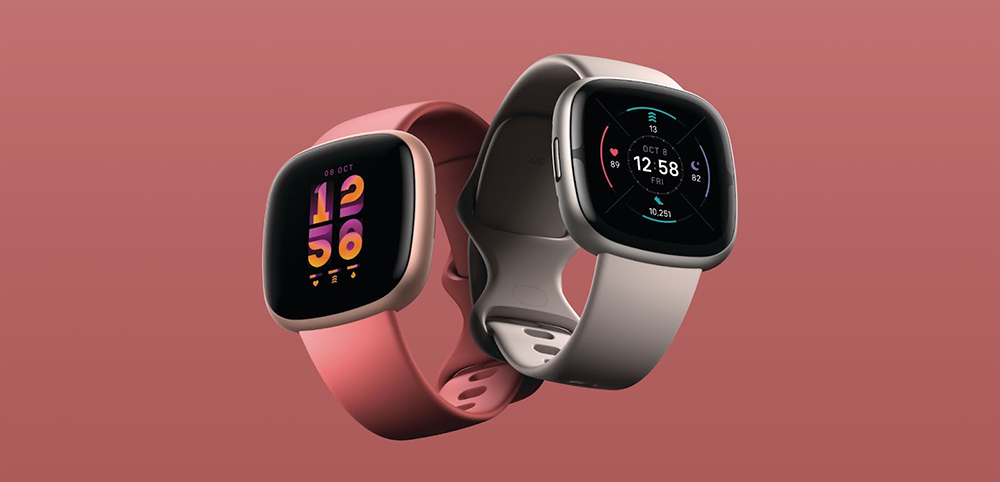

The Fitbit Sense 2
MSRP: $299.95
The Sense 2 — which is the second generation of Fitbit’s Sense wearable that debuted back in 2020 — adds new sensors and Google compatibility on a lighter and thinner interface. Foremost among the gadget’s new additions is the continuous electrodermal activity (cEDA) sensor, which is designed to track the wearer’s stress levels over the course of a day. Also new to the gadget is the incorporation of health monitoring sensors into the device’s display using vaporized electrodes. The revamped Tile interface is a major UI upgrade, and the Sense 2 will be compatible with Google Maps and Google Wallet, though a timeline for the implementation of these features has yet to be released.


The PSB T800 Loudspeakers
MSRP: $11,999
Standing roughly four feet tall, the PSB T800 Loudspeaker is the standard bearer for the company’s new Synchrony line of high-end audio equipment. Designed in celebration of PSB’s 50th anniversary, the T800 has a five-way transitional array with three 8-in. woofers and a 5.25-in. midrange driver, all of which are made out of cast baskets and woven carbon fiber cones. Completing the five-way transitional array is the 1-in. titanium dome tweeter. Though the T800 is targeted at the high-end consumer, it is a piece of equipment worth having on your radar.


The Samsung 55-inch Odyssey Ark
MSRP: 3,499.99
Designed to perfectly match the curvature of the human eye with a 1000R curved gaming screen, the Odyssey Ark from Samsung is the largest gaming monitor of its kind at 55 inches. The device features display rates of 165Hz and has a unique ‘Cockpit Mode’ to fully immerse the user — peripheral vision and all — into the screen. The Odyssey Ark also features Samsung’s Matte Display and Sound Dome Technology to give users the company’s best cinematic experience.
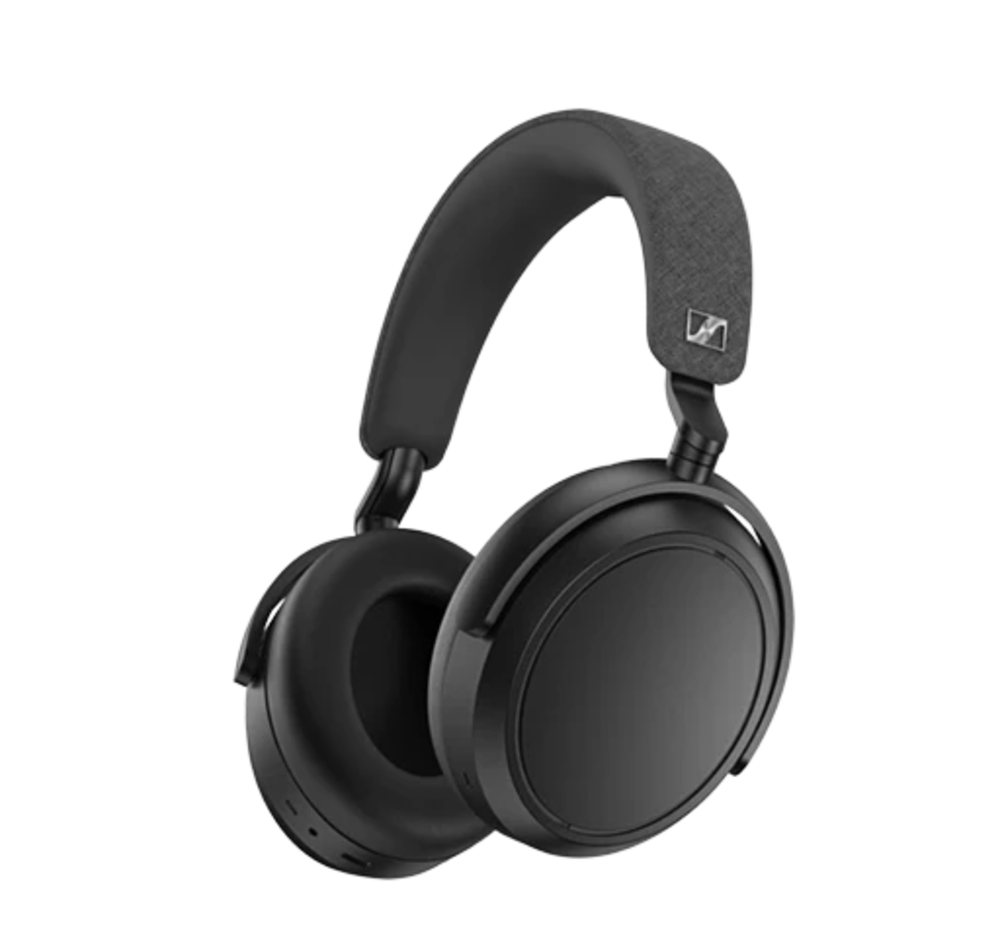

Sennheiser MOMENTUM 4 Wireless
MSRP: $349.95
Any new product release from Sennheiser is worth paying attention to due to the company’s outstanding pedigree in hi-fi audio. The MOMENTUM 4 Wireless over-ear headphones, which went on the market this past August, include Adaptive Noise Cancellation and a slew of other features, such as Transparency Mode, Built-in EQ and Sound Personalization. The headphones have an outstanding 60 hours of battery life and are powered by a 42mm transducer, which allows for crisp signal conversion.
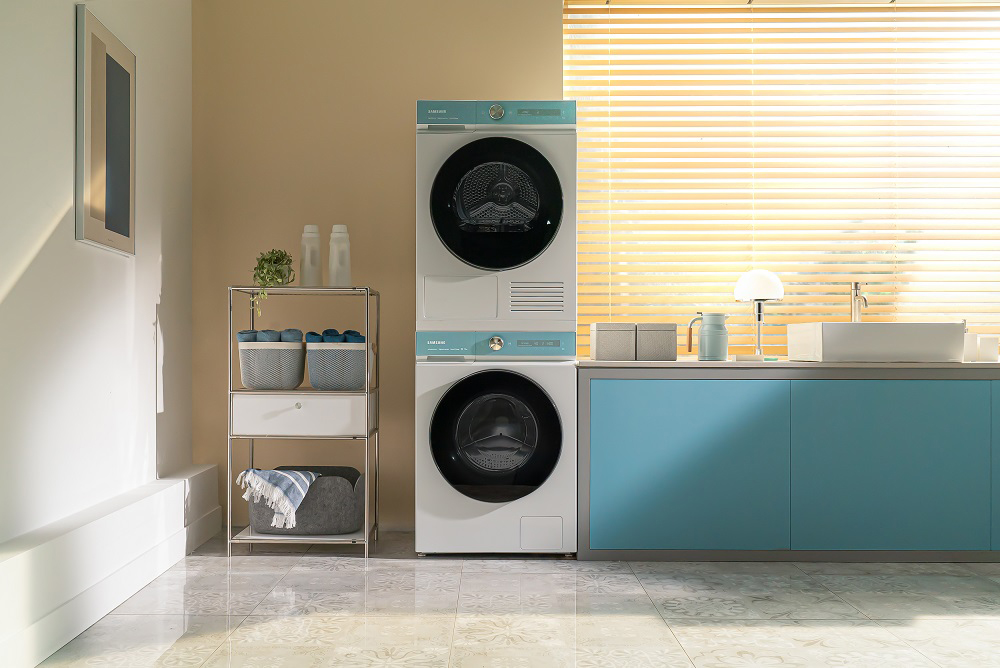

Samsung Bespoke AI Washer
MSRP: $999.99
Samsung has long made sustainability a key pillar of product development, and the new Bespoke AI Washer continues with that mold. The AI Ecobubble feature — which turns detergent into bubbles that are rapidly absorbed into clothes — can reduce washer energy usage by up to 70 percent. The Bespoke AI Washer also includes a larger drum with an 11-kilogram capacity while retaining the device’s traditional external dimensions.
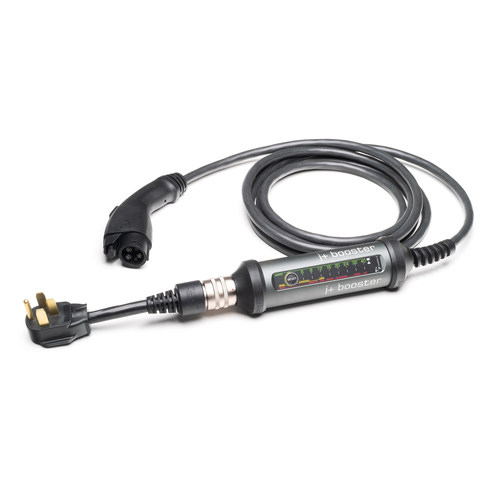

J+ BOOSTER 2
MSRP: $699.99
Compatible with any model of EV, the J+ BOOSTER 2 portable EV charger plugs into any 6-40 amp, 120-volt or 240-volt electrical outlet and can charge a battery in four to six hours depending on the size of the battery pack. The J+ BOOSTER 2 is built to be taken on the road and to withstand the elements. It features an in-cable control box made out of military-grade aluminum that can handle a load of 6,600 pounds and temperatures as low as -22 degrees.


LG T90 Earbuds
MSRP: $229.99
LG, in partnership with Meridian Audio, has released its 2022 lineup of Tone Free wireless earbuds. Headlined by the T90, the new product line features a charging case, which utilizes UV-C light to kill 99.9 percent of bacteria on the headphones in just 10 minutes. It also features Dolby 360 audio, which gives the earbuds the capability to recalibrate sounds as the user moves their head. The earbuds will be available in the U.S. starting in September.
The LG CineBeam UST Projectors
MSRP: $6,000-$6,500
Earlier this Summer, LG announced the release of its new CineBeam projectors: The HU915QE and the HU915QB. The UST projectors can broadcast 90-in. images in 4K quality from just 2.2 inches from the wall and 120-inch wide images from a meager 7.2 inches from the wall. The devices also offer AirPlay 2 support, Bluetooth and screen mirroring. The HU915QE is going for a hefty $6,000, while the more advanced HU915QB is going for an even loftier $6,500.
UNBOXED
Zojirushi Pressure
Induction Heating
Rice Cooker & Warmer
NW-JEC10
A small appliance staple with a big bang
By John R. Quain
You don’t know what you’ve got until it’s gone, goes the popular melody, a sentiment that could easily apply to rice cookers: You can’t really appreciate how great they are until you’ve used one—and then had to do without it.
Not known as a small appliance staple in the U.S., in other parts of the world rice cookers are as essential as a coffee maker or toaster — and for good reason. Sure, with suitable attention and patience one can produce a serviceable couple of cups of rice on a stove top, but only an electric rice cooker with microprocessors and software that measures heat and humidity can produce truly superlative rice consistently and without fuss.
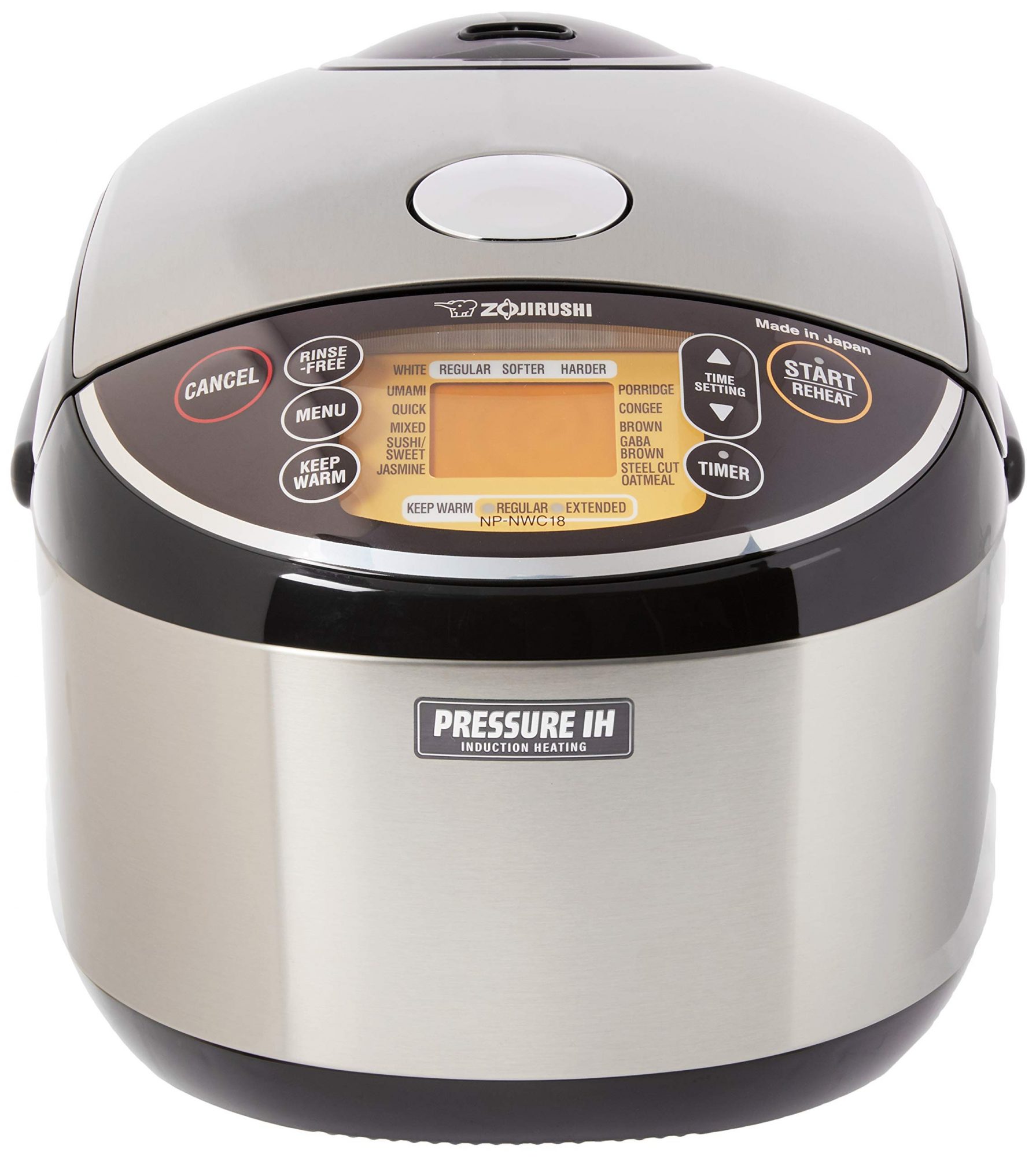

At the pinnacle of the rice cooker category today is Zojirushi’s $711 Pressure Induction Heating Rice Cooker and Warmer (NWJEC10). It has a 5.5 cup capacity, uses AI and microprocessors with sensors to compensate for humid or dry cooking conditions, and has a very legible LCD display for selecting the type of rice and cooking mode. The cooker can handle a wide variety of rice with a variety of settings: white rice (regular, soft, softer, firm or firmer), umami, mixed, sushi, Jasmine, porridge, congee, steel cut oatmeal, quick white, quick Jasmine and brown rice.
The Zojirushi NWJEC10 cooker also features an induction cooking system that is usually lacking in lower-price models. The induction element in the cooker generates an electromagnetic field that draws electrons when a magnetic element, in this case a non-stick iron pot, comes into contact with it. The flow of electrons creates heat in the pot with the advantage being that the temperature can be almost instantly adjusted. It’s also more energy efficient.
However, while rice cookers can be flawless, they’re not fast. One can make faster—although decidedly less flavorful—rice on a stove. But rice cookers like the Zojirushi induction model we tested produce far superior, fluffier, more delicious rice every time. And cookers like the Zojirushi Pressure Induction model allow you to set it and forget it. After you start, say, white rice at the firm setting, you can go on to do the rest of your prep work in the kitchen and not bother with the rice until you’re ready to serve. Once the cooking is done, the rice cooker will keep the rice warm for hours without drying it out or burning it.
In our testing, the Zojirushi Pressure Induction cooker proved that it deserved its reputation as the best home rice cooker available. It has scores of settings to accommodate the most discerning cook, from firm or sticky white rice to jasmine rice to steel cut oatmeal and congee. It really comes into its own producing brown rice, including a GABA setting. GABA stands for gamma-aminobutyric acid, which is released with slower cooking times and is supposed to have added health benefits. While we can’t vouch for that, we can confirm GABA tastes better—and takes more time.




Consider that 3 cups of white rice with a standard “softer” cooking setting takes 57 minutes, while the same amount of brown rice at the GABA setting takes 2 hours and 5 minutes. On the other hand, cooking brown rice properly on the stove is challenging, whereas the Zojirushi induction rice cooker gets it right every time, with the right degree of chewiness without becoming overcooked or sticky. Indeed, every type of rice we tried with the Zojirushi machine was handled with aplomb, as if an expert chef had spent hours toiling over a stove to produce it.
If the Zojirushi model has an Achilles heel it’s that it offers so many options, it will take most cooks months before they learn what setting they prefer (who knew there were so many choices?). So Zojirushi has come up with a novel feature called “My Rice (49 Ways).” After a meal, you can criticize (or praise) the machine by imputing your assessment of how the rice turned out (like a star ranking). Based on your inputs, the Zojirushi rice cooker will continue to make small changes to the cooking times, humidity, etc., until it gets to exactly the way you like it.
If we had one criticism of this exquisite appliance, it was that the self-cleaning function was less than perfect. To perform a self-clean, you put some water in the cooking bowl, close it and hold the timer button for 3 seconds to trigger the 60-minute cleaning cycle. If you’ve been neglectful (you’re supposed to clean the machine’s lid after each use), the pressure cooking will loosen up any hidden starchy build up in the system’s valves—but you’ll still have to do an extensive wipe down and lid cleaning to finish the job.
Using a rice cooker, any rice cooker, also requires an extra step that some Western cooks may not be familiar with: rinsing the rice. Rinsing it in a bowl with one’s hands removes any starchy build up on the outside of the grains. The rice should be washed by hand until the water in the bowl becomes clear. We think the extra handling is a small price to pay for superior rice. As is the Zojirushi Pressure Induction cooker’s higher price tag, if you want the finest rice every time.
VIDEO
Leaps and Small Steps for Virtual and Mixed Reality
Manufacturers are making strides towards the most comfortable and immersive experience
By Egon Sanders
Few technologies have inspired the kind of zeal in the past decade as virtual and mixed reality. While the tech’s initial hype cycle originally started back in the 80s, it didn’t properly “arrive” until the launch of the Oculus Rift on Kickstarter in 2012 (funded to the tune of $2.5 million). Shortly after this success, Facebook purchased Oculus for $2 billion; what followed has been nearly a decade of massive investment in the space, by the likes of many of the industry’s biggest companies. Meta has been perhaps the biggest, with Mark Zuckerberg remaining bullish in his belief that the technology represents the future of computing. Gaming giant Valve Software has partnered with HTC on several VR headsets and also released its own; Apple, meanwhile, is expected to announce its much-talked-about mixed reality headset in the near future—a bold step for the company, and one that has been many years in the making.
While VR and particularly XR technology is still very much in its infancy—manufacturers are still making massive inroads on the quality, comfort and size of their headsets, while software developers are still grappling with how to best leverage the power of this nascent format—it seems all but certain that the tech will be a major factor in the future of how we interface with computers. We’ve gathered together a host of the most exciting VR and XR headsets on the market today.


Meta Quest 2
As the first proper “all-in-one” headset—that is to say, one that didn’t require being tethered to a PC in order to power it—the original Oculus Quest was a game-changer when it was released in 2019. The Quest 2 has upped the ante in nearly every regard: most significantly, an improved processor and a sharper display, resulting in 1832 by 1920 resolution per eye, compared to 1440 by 1600 of the original Quest, along with a 90Hz refresh rate. It’s lighter and more comfortable than the original, and the untethered nature of the experience makes it easy to bring around or use outside. (Where most tethered headsets require external sensors, the Quest 2’s “inside-out” tracking does a great job on its own.) For those who want a higher-end VR experience, it’s also flexible: by connecting the headset to a gaming PC using Oculus Link and a compatible USB Type-C cable, you’re able to harness the power of a beefy computer, rather than being performance-limited by a built-in processor.
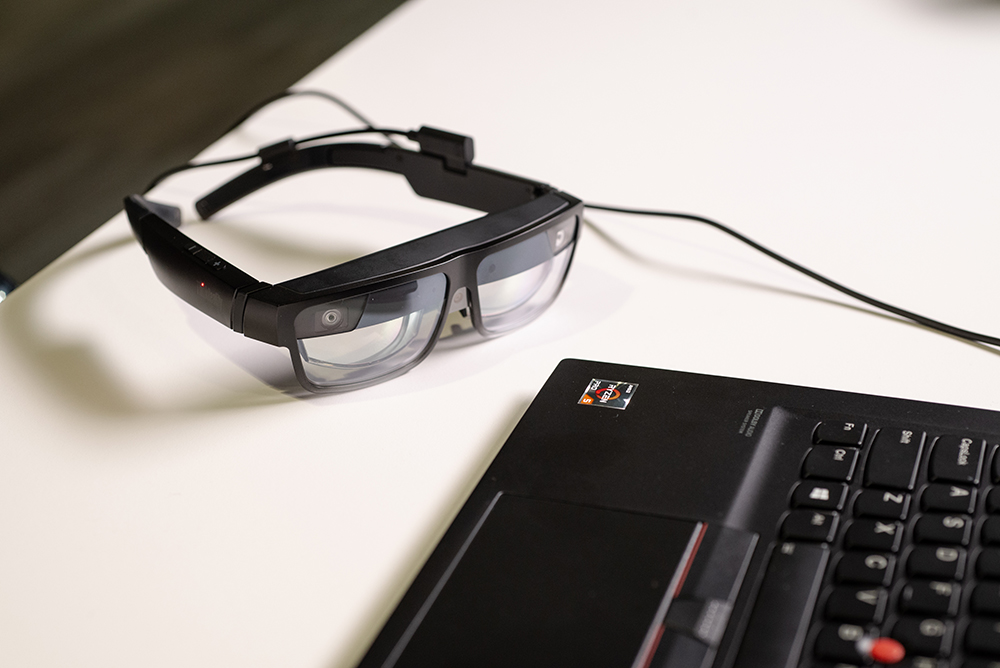

Lenovo ThinkReality A3
While most current headsets are focused on virtual reality— immersive experiences, and games in particular—Lenovo’s ThinkReality A3 takes a different tact. The glasses connect to a laptop or smartphone and are clearly targeted at the enterprise market. The premise is quite simple: replace a productivity setup involving multiple displays, with a single pair of smart glasses, which can project multiple virtual displays for portable and more flexible virtual workspaces. Not only is this more convenient than setting up multiple monitors, but it also allows one to work privately, even in public spaces. Powered by Qualcomm’s XR-1 SmartViewer technology, the glasses feature a 1080p resolution for each eye, an 8MP RGB Camera, three noise-suppressing mics and stereo speakers. It features head/gaze tracking, and even a barcode reader for quick product scanning.
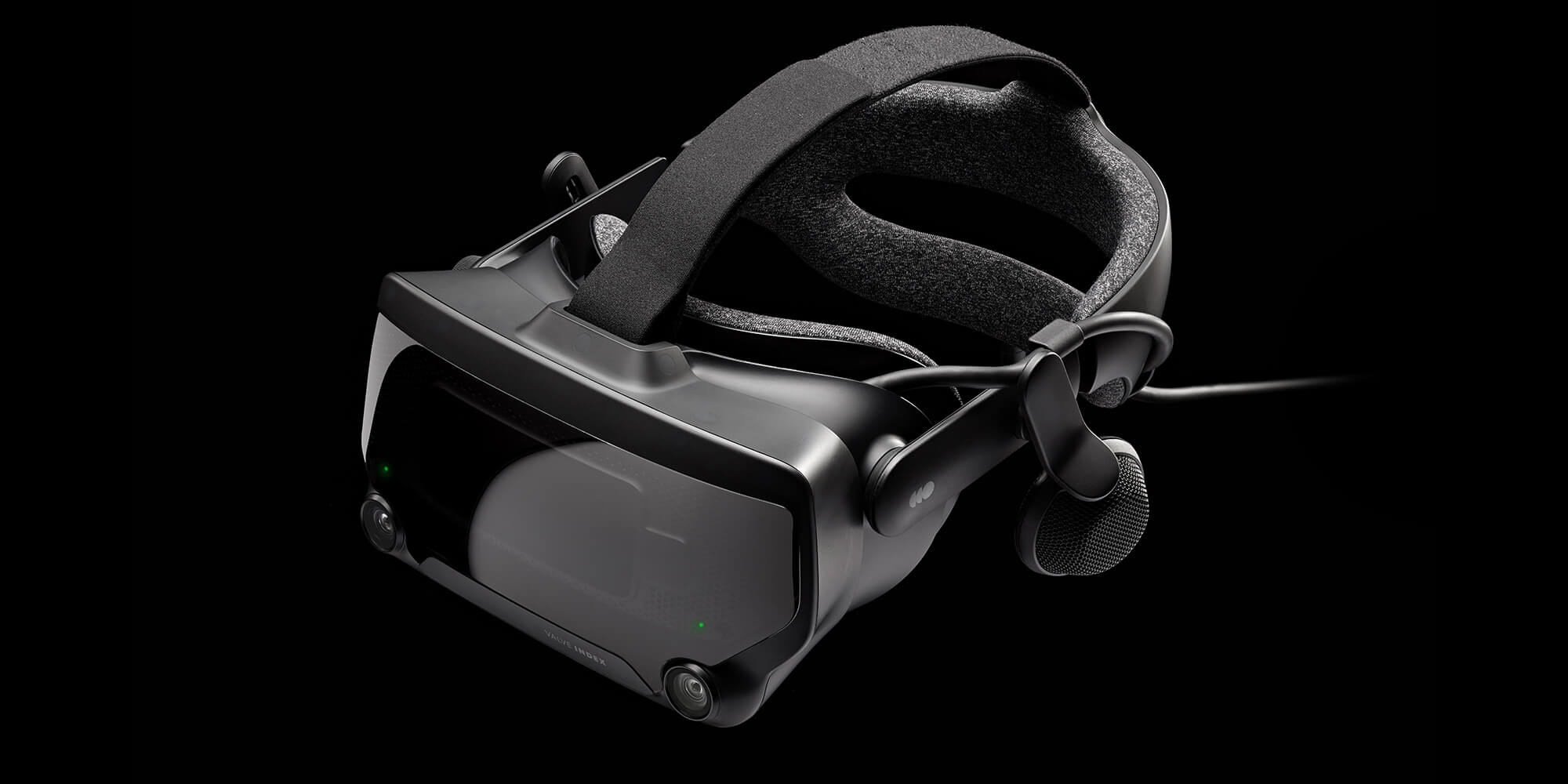

Valve Index
In terms of the current market for VR headsets, the Valve Index is quite possibly the cream of the crop. Valve is a familiar company to gamers (it’s the company behind the popular Steam storefront), and was an early player in the VR space, teaming with HTC on the original Vive headset. In terms of specs, its Index is a heavy hitter: the 2880 by 1600 display resolution is some of the highest out there, and it’s paired with a smooth 120Hz refresh rate and an equally impressive 130-degree field of view. It’s built from significantly higher-quality materials than most VR headsets, with great weight distribution and stability. The controllers, which strap to the user’s hands, function as both typical VR motion controllers, as well as hand/finger trackers—in the Aperture Hand Labs demo this is put to great effect, letting you do stuff like play rock-paper-scissors with a host of robots or give them a thumbs-up. Finally, built-in near-field speakers provide a more three-dimensional sound space than typical headset headphones, and less ear fatigue. It’s one of the pricier VR headsets out there, to be sure, but in many ways it’s also tough to beat.
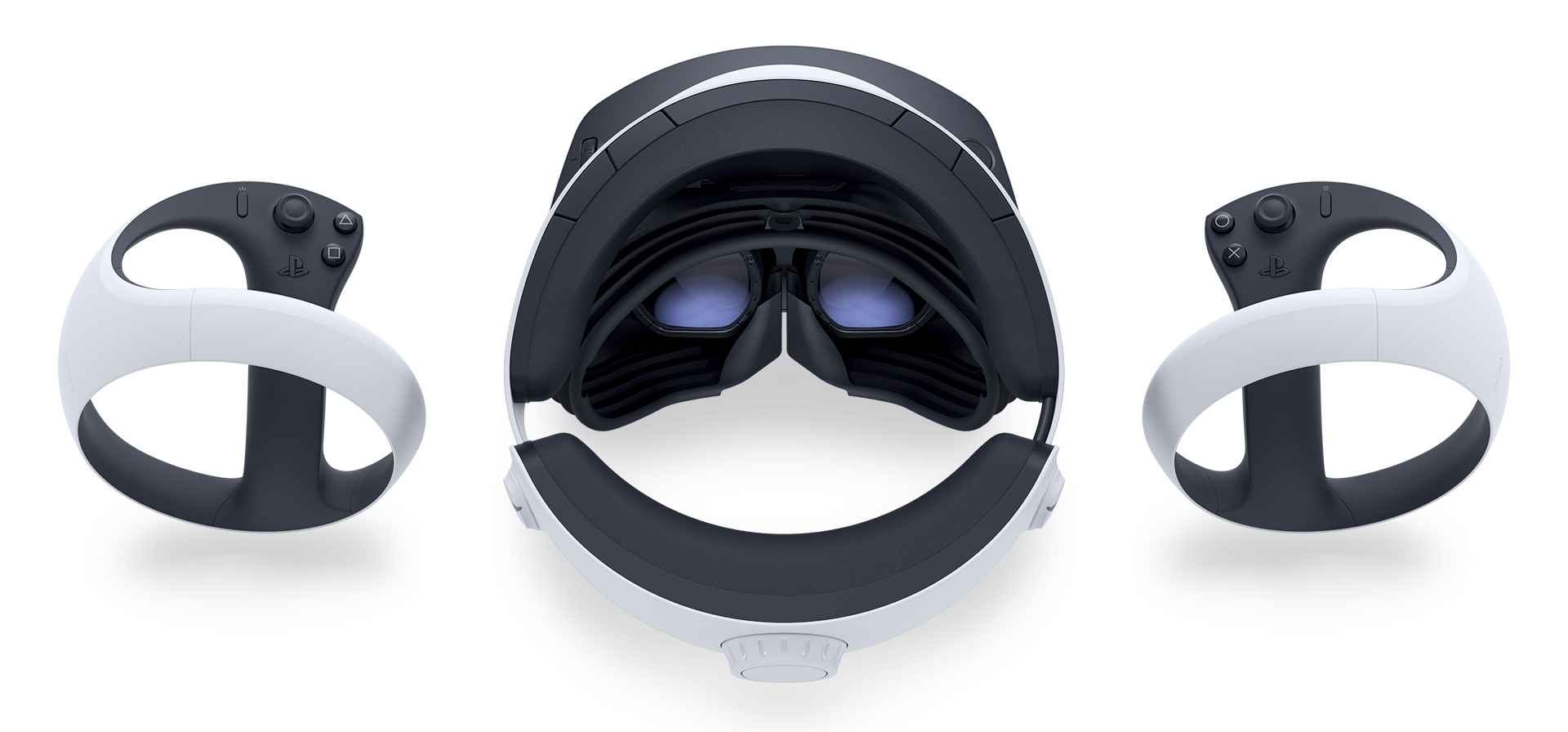

PlayStation VR2
As the only major game console manufacturer to go all-in on virtual reality, the original PlayStation VR was Sony’s biggest bet in a generation. And it’s proven itself to be a good one, as evidenced by the fact that Sony will be releasing its successor in early 2023. It’s a major leap beyond the original in nearly every way: The headset itself has an OLED screen, offers an impressive 110-degree field of view and 4K HDR, and supports frame rates of 90Hz and 120Hz for smoother gameplay. Unlike its predecessor, users won’t need to set up external cameras around their playspace; instead, the headset has four cameras built into the headset for inside-out tracking. The new PSVR2 Sense controllers include adaptive triggers and haptic feedback (much like the PS5 DualSense controllers) and can even detect individual finger touches. Finally, rather than the bevy of cables required by the original, you’ll only need to plug it into your PS5 with a single USB-C cable.


E-COMMERCE
From Sales to Strategy
Five ways digital signage can enhance retail spaces
By Tomer Mann, Chief Revenue Officer, 22Miles


COVID changed the way we shop. E-commerce now accounts for 37 percent of retail sales, up from 27 percent pre-pandemic. Any rumors of brick-and-mortar retail’s demise are premature, however. Last year, the growth rate of brick-and-mortar retail outstripped that of online shopping, growing beyond pre-pandemic levels. Shopper behaviors indicate that people can shop for just about anything online, but given the choice, they don’t always want to.
That should be a relief to brick-and-mortar operators, but it’s no guarantee of future success. The great strength of in-person shopping is experience, while e-commerce shines at convenience. Some of the biggest companies in the world – Apple, Meta, Google, Amazon and more – are working to close the online experience gap. If the dream of the metaverse is fully realized, e-commerce vendors will be able to offer communal shopping experiences that rival the real world.
To counter, brick-and-mortar retailers need to counter by increasing the convenience of in-person shopping while maintaining and enhancing their in-store customer experience. There’s no better tool to help retailers achieve this goal than digital signage. Let’s explore the top five visual communications applications for staying competitive in the digital shopping age.
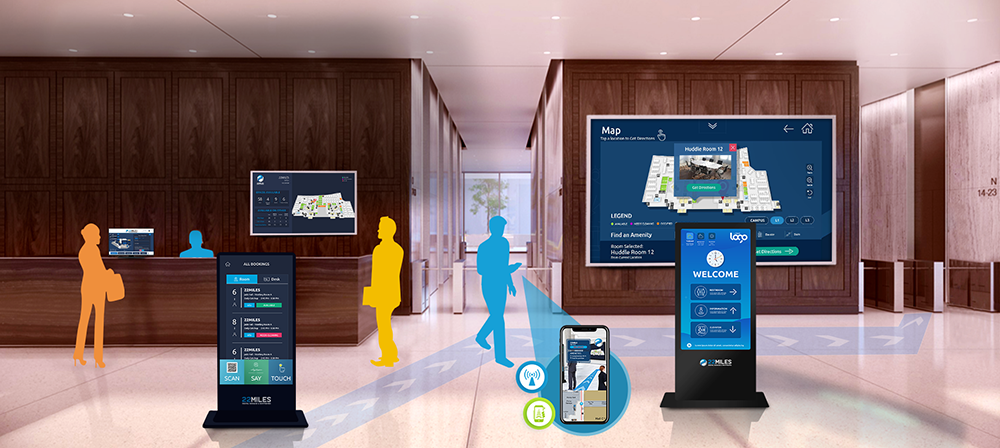

Advertising and Promotions
Digital signage offers a dynamic, efficient and engaging way to reach customers, offering many advantages over both traditional print and web advertising. Motion graphics like animations, videos and slideshows make digital signage activations significantly more eye-catching and translate to more year-over-year ROI. And, because the content can be refreshed at will, screens deliver more long-term value and versatility than stagnant signs. Digital displays can be effectively customized by location and designed for interactivity, carrying relevance and power to convert sales that rivals online ads.
A long-cited barrier to entry for digital signage has always been content management. This is a hurdle that has come crashing down in recent years: Today’s best CMS solutions do a lot of the design work for the user, making it attainable for more retailers to create, distribute, analyze, and refresh content. Retailers can add their branding – logos, colors and fonts – to the system for rapid creation and deployment of unified, professional looking content throughout their stores and across locations.
Many CMS providers make campaigns more effective with one-click interactive elements: In minutes, retailers can create promotions that allow customers to schedule an appointment with an associate, instantly download an offer to their mobile phones, or order an item directly from the sign. Retailers of any size – from individual stores to nationwide brands – can leverage modern digital signage to drive conversions and align with current goals.
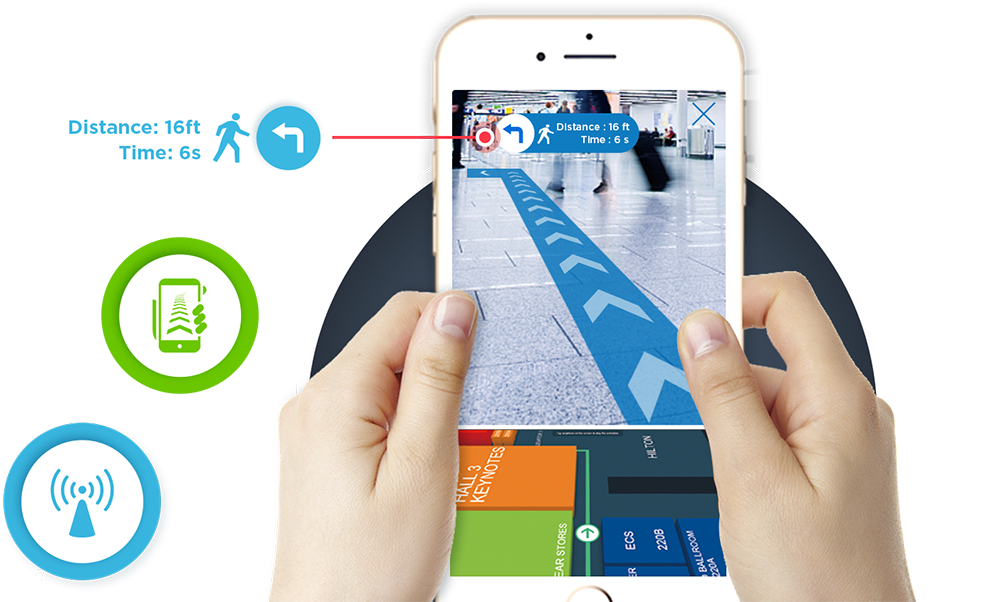

Interactive Experiences
In-person retail has always had an experiential advantage over e-commerce due to both its social nature and the opportunity to explore products in-person before purchasing. Online retailers are investing heavily in technology to blunt this edge. Already, furniture and apparel companies are leveraging 3D models and AR apps to allow customers to visualize online products on their own bodies or in their own homes. They’re also pouring billions into metaverse features that will allow customers to take online shopping trips together in the future.
Two can play at this game. Brick-and-mortar retailers can create immersive interactive in-store experiences that are far more compelling that anything on a mobile phone screen. A large-scale videowall or wrap-around video projection feature always commands attention. Now—in customer experience centers—innovative retailers can create personalized, interactive experiences that close high-end sales. Using touch, gestures, mobile or a control kiosk, customers can navigate virtual worlds on a massive scale, surrounded by imagery of the product, solution, or space they’re envisioning. At the same time, they can continue to receive the personal, human support and advice of skilled sales associates. This is the future of luxury in the retail experience.
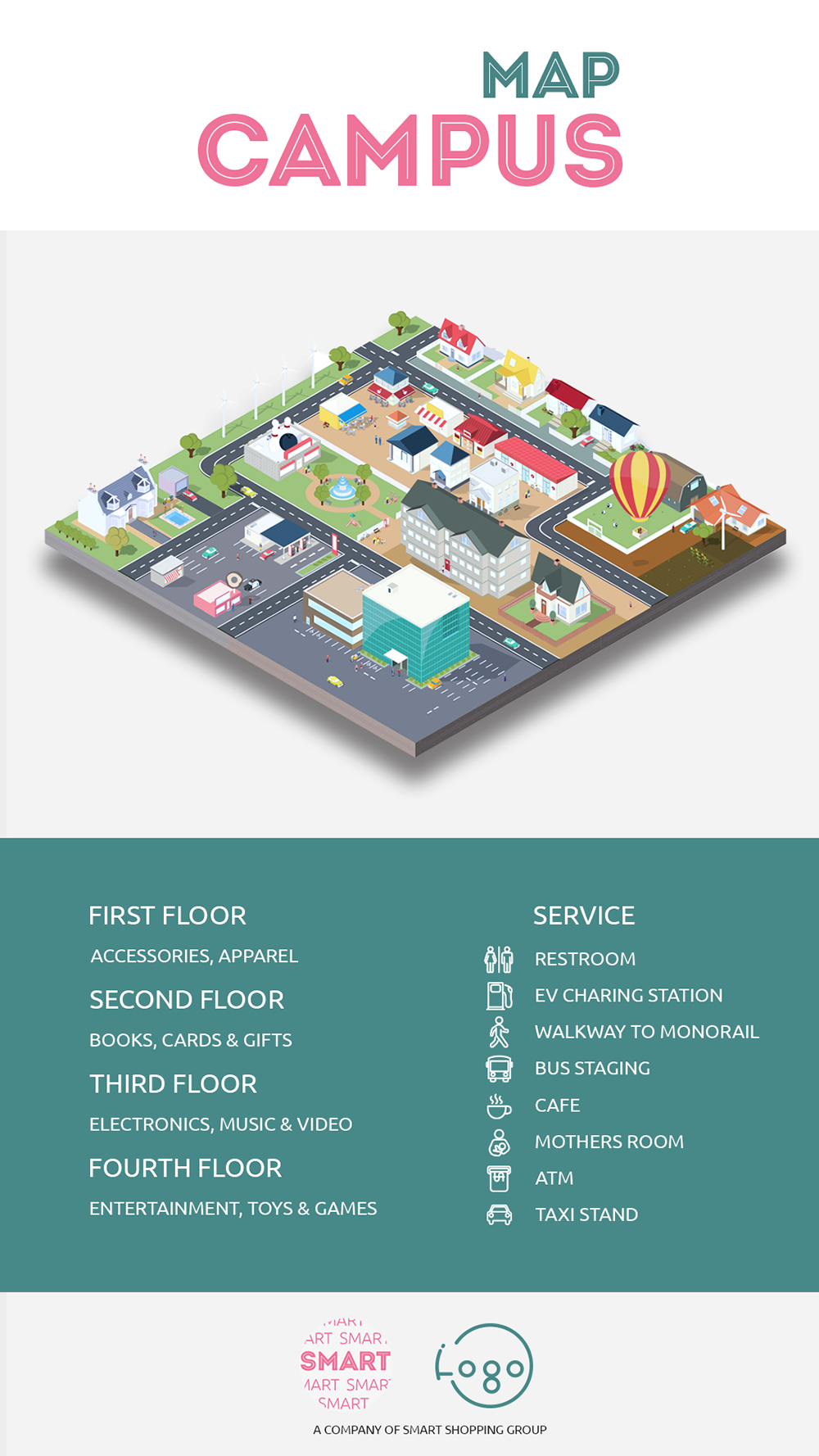

Wayfinding
While continuing to innovate on experience, retailers must also close the convenience gap. Digital wayfinding is one of the most effective ways to make shopping in-person feel as easy as online. A digital in-store directory can help customers navigate departments and find what they’re looking for quickly – even after a reorganization.
For shopping malls and multi-use destinations, digital wayfinding can help users navigate complex destinations with confidence, with 3D maps and personalized turn-by-turn directions that can be instantly downloaded onto the user’s phone. Wayfinding kiosks and signs can also share a digital backend with advertising and promotions systems, and sync with events or sales calendars. By connecting the system to existing inventory database APIs, retailers can allow users to instantly verify whether an item is in stock and where it’s located—or order it for in-store pickup if it’s currently sold out. These digital maps and integrations can be automatically updated in real-time for accurate information and a frustration-free shopping experience.
Back-of-House
The human touch is a massive asset of brick-and-mortar retailers—which makes it incredibly important to invest in the workplace experience of retail employees. The same unified content backend that drives the customer experience can also be leveraged to inform and unite retail staff. Retailers can send important employee communications through back-of-house screens, kiosks, or mobile apps to keep associates informed on the go.
By integrating digital signs with business intelligence tools like BI360, teams can monitor KPIs and adjust their tactics to ensure they meet their goals. In retail applications requiring a high degree of employee expertise and guidance to close sales, associates can use digital signage to schedule meetings and reserve room – even sending invitations to colleagues directly from the sign. A visual communications system is an essential tool to help sales teams offer up-to-the-moment customer guidance and work together to meet location goals.
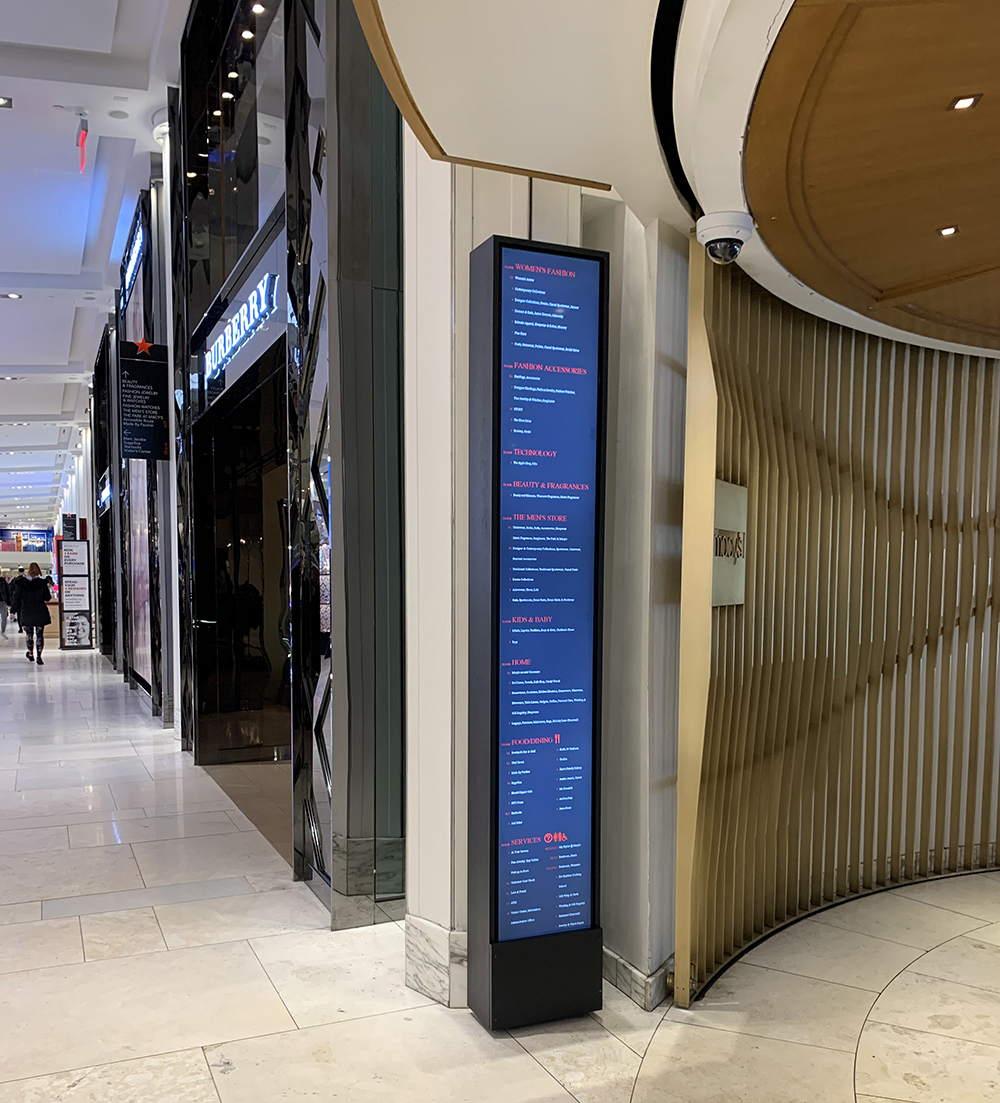

Analytics
One of the main reasons for e-commerce’s exponential growth is the online retailer’s ability to leverage analytics to learn about their customers. Following a digital breadcrumb trail, e-commerce businesses can understand how customers navigate their site, how much time they spend evaluating their purchases, what content is driving the most clicks and sales and more. Interactive digital signage gives brick-and-mortar stores the same edge.
Using a modern CMS, every click throughout a digital signage network can be recorded and analyzed to learn about customer behavior. Retailers can use their signage analytics to understand what customers are searching for, what locations are seeing the most traffic, which ads are the most engaging, and more. This information can help them iterate their content approach for ads and promotions; optimize store layouts by examining movement patterns; and plan activations by identifying their busiest times and locations. Digital signage can help retailers build their strategy for tomorrow even as it improves customer experience today.
Digital signage is an invaluable tool for making brick-and-mortar shopping compelling in the age of the multiverse, and in-person retailers must remain vigilant and innovative to compete with advancing e-commerce experiences. Ultimately, with the right content management system and strategic approach, digital experiences are a rising tide that can lift both brick and mortar and online sales.
STAT SHOT
CE Industry By The Numbers
COMPILED BY SAM HITT
10,000...
…Model Y SUVs have been produced by Tesla at the company’s new gigafactory production facility in Texas.
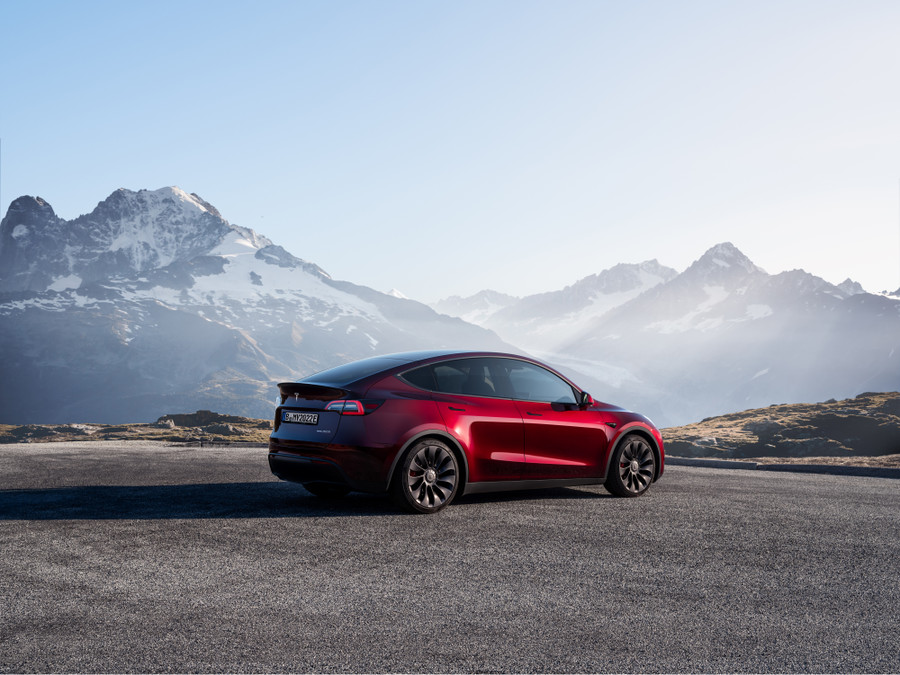

150,000…
… seasonal workers will be hired by Amazon to help handle the holiday season spike in eCommerce orders.
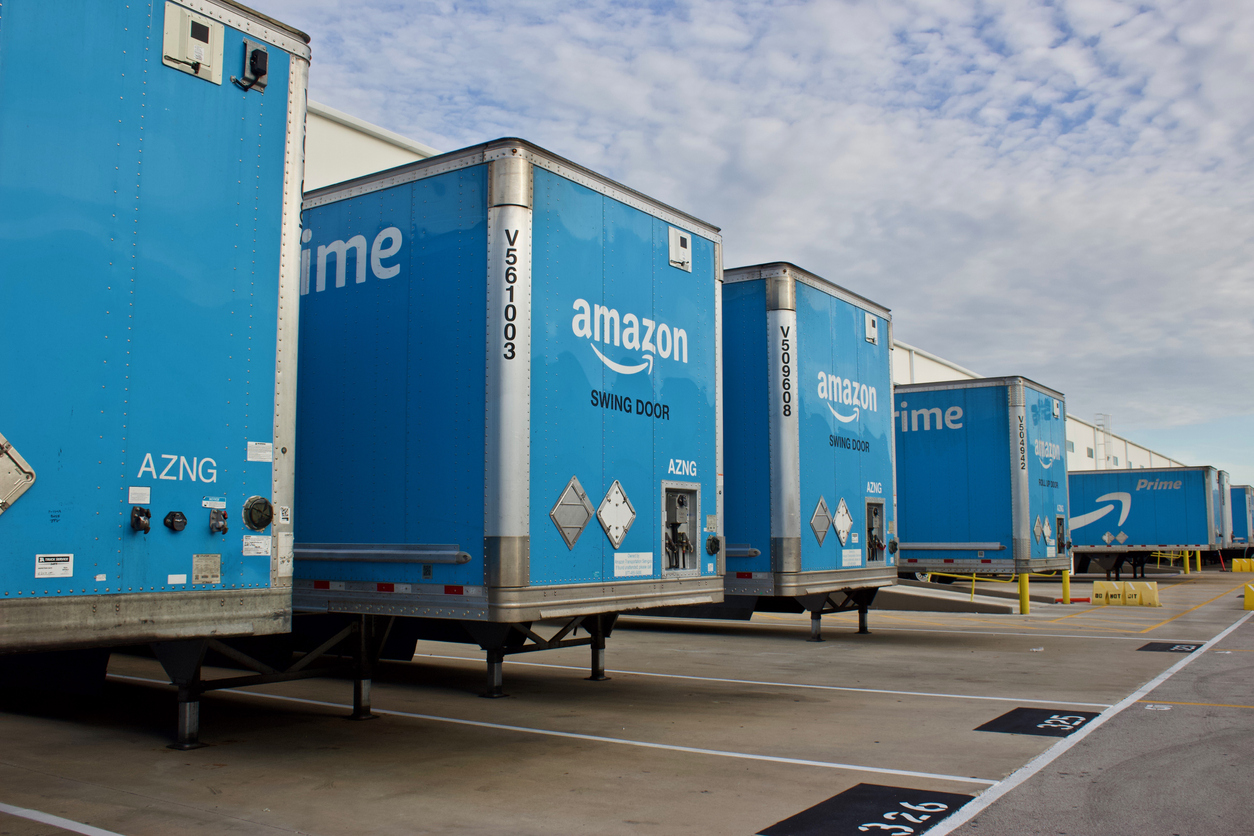

280…
… companies currently participate in the Connectivity Standards Alliance’s Matter smart home standard.


108 minutes…
… is the amount of time it takes to fully charge the Jackery Solar Generator 1000 Pro off of four 200W solar panels.


44 percent…
… of stovetop orders fielded by designers, dealers and manufacturers called for induction stoves. Although this number still lags behind gas stoves at 47 percent, it shows that induction technology is gaining momentum.
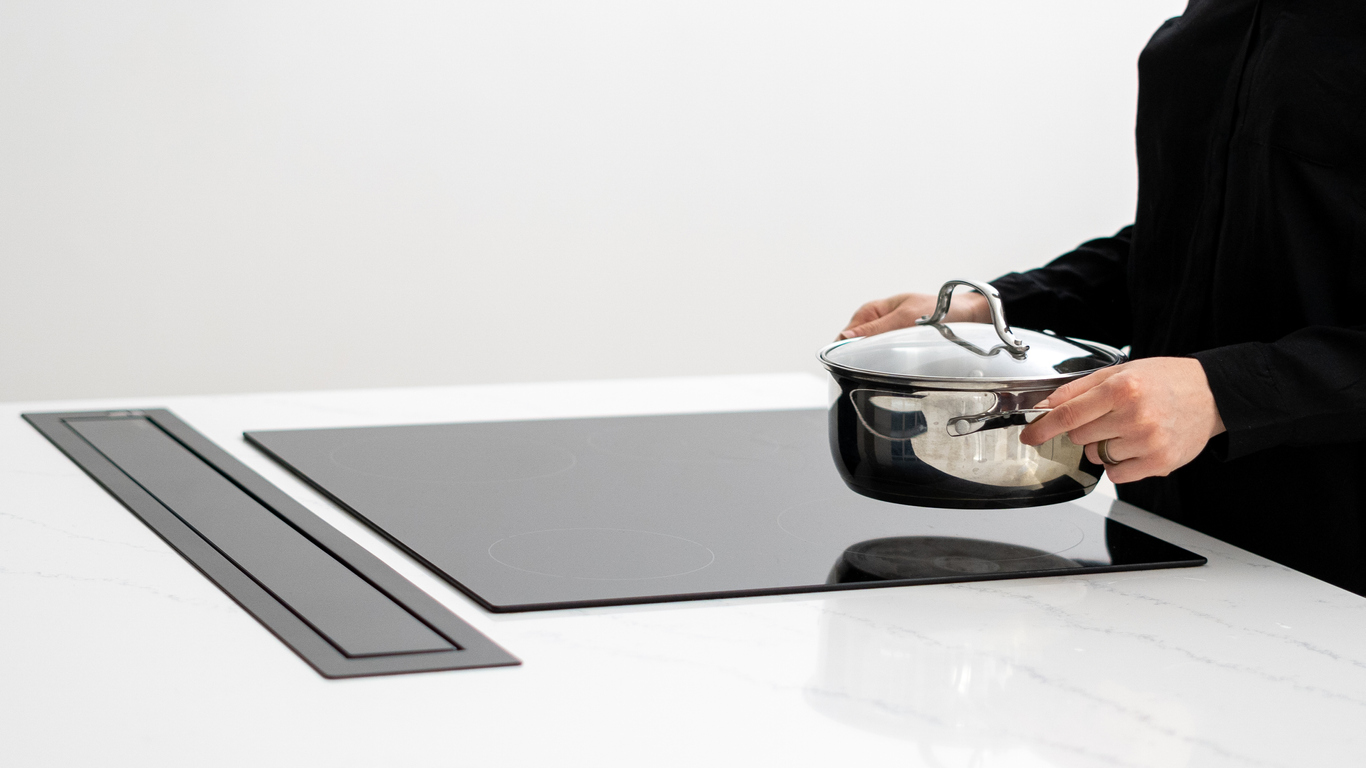

DEALERSCOPE PODCAST
Welcome to the
Dealerscope Podcast –
Your Source for
all B2B trends in Retail,
Tech and Biz!
In the high-strung consumer electronics retail business, it can be hard to take a moment to step back and breathe. The Dealerscope Podcast gives CE retail leaders the chance to kick back, relax and talk shop in a casual setting.
Get Dealerscope
and Connected Design
delivered to your doorstep
or to your email.
Click on the links below to update how and where you receive your issues! Change your mailing address or request a change from print to digital, subscribe to our newsletters, or just head to our websites.
CONNECTED DESIGN
Subscribe to Print Magazine
Renew Your Subscription
Subscribe to Newsletters


OFFICES
100 S. Juniper St., 3rd Floor
Philadelphia, PA 19109
132 West 31st Street, 9th Floor
New York, NY 10001
EDITOR IN CHIEF
Erinn Loucks
eloucks@ctlab.media
SENIOR MANAGING EDITOR
Sam Hitt
samhitt@ctlab.media
CHIEF SOCIAL MEDIA AND WEB EDITOR
Brenda Thelusca
bthelusca@ctlab.media
ASSOCIATE EDITOR
Alec Paige
apaige@ctlab.media
CONTRIBUTORS
Mike Kobrin
Tomer Mann
John R. Quain
Egon Sanders
Stephen Silver
Jeff Unterreiner
CREATIVE
Astrid von Krenski
avkrenski@ctlab.media
GROUP PUBLISHER
Tony Monteleone
(718) 216-2046
tmonteleone@ctlab.media
OPERATIONS MANAGER
Vicki Manucci
vmanucci@ctlab.media
CIRCULATION & DISTRIBUTION
Carrianne Ramsey
cramsey@ctlab.media
ACCOUNTING/HR MANAGER
Catalina Gonzalez
cgonzalez@ctlab.media
CHIEF OPERATING OFFICER
Alice Schmalzl
(484) 645-1691
aschmalzl@ctlab.media
OFFICES
100 S. Juniper St., 3rd Floor
Philadelphia, PA 19109
132 West 31st Street, 9th Floor
New York, NY 10001
dealerscope.com
Publisher of Dealerscope, and Connected Design
Copyright ©2022 CT Lab Global Media LLC
CT Lab Global Media is a diversified publisher of business and professional magazines. This publication is provided with the express understanding and agreement that the information and data within it will be solely for internal use and will not be used for the creation or updating of mailing lists for sale or distribution to third parties. Printed in the U.S.A.

